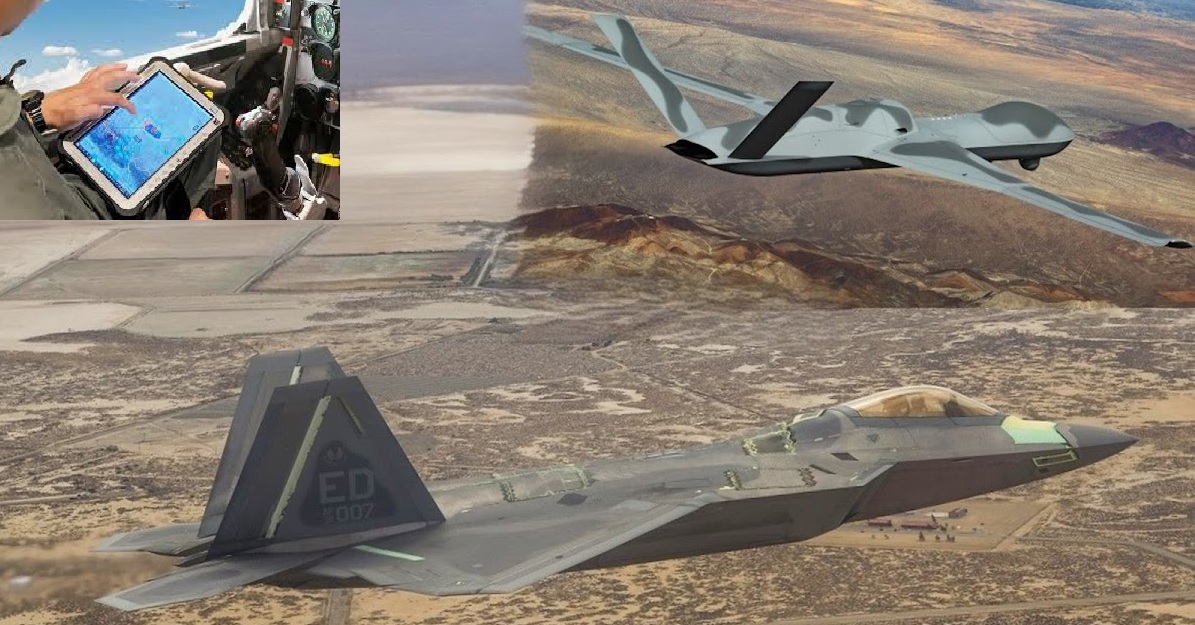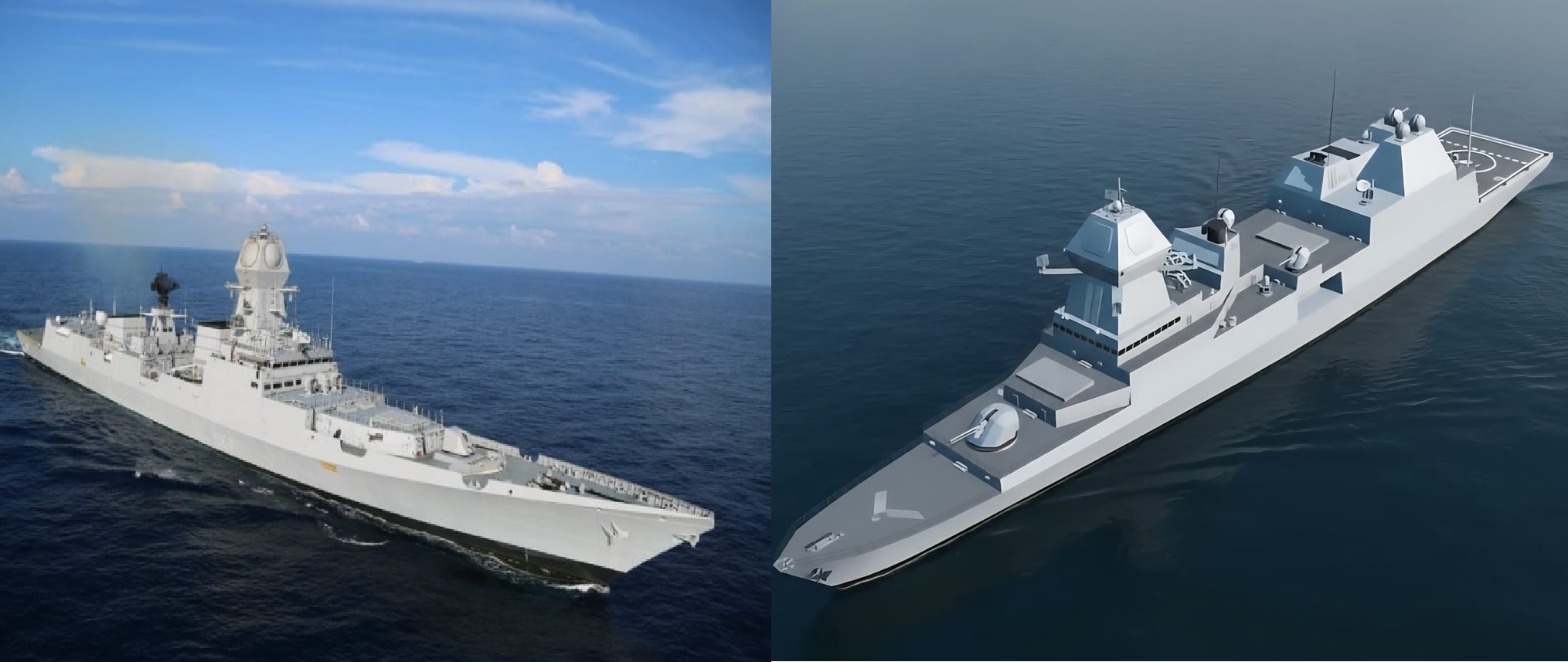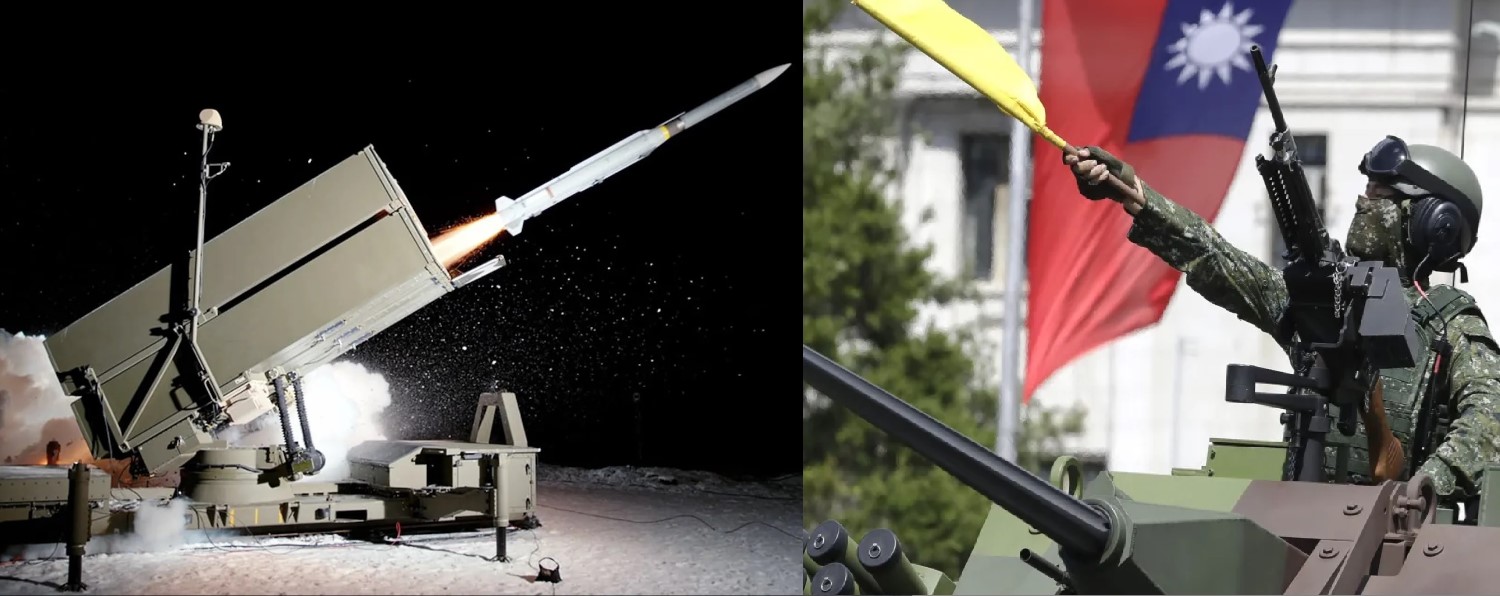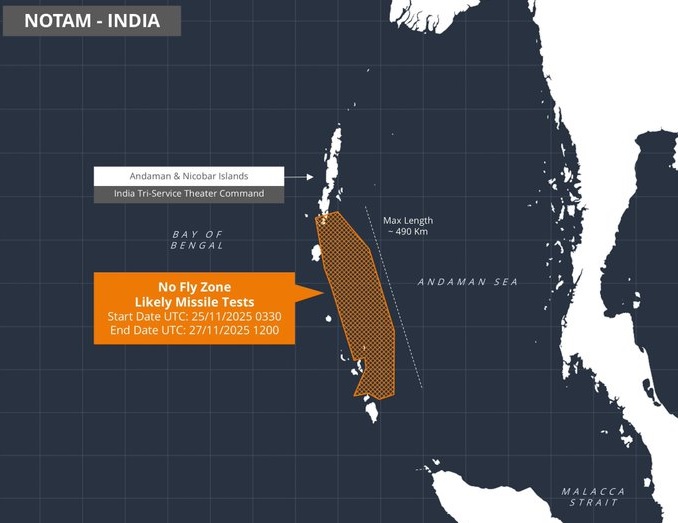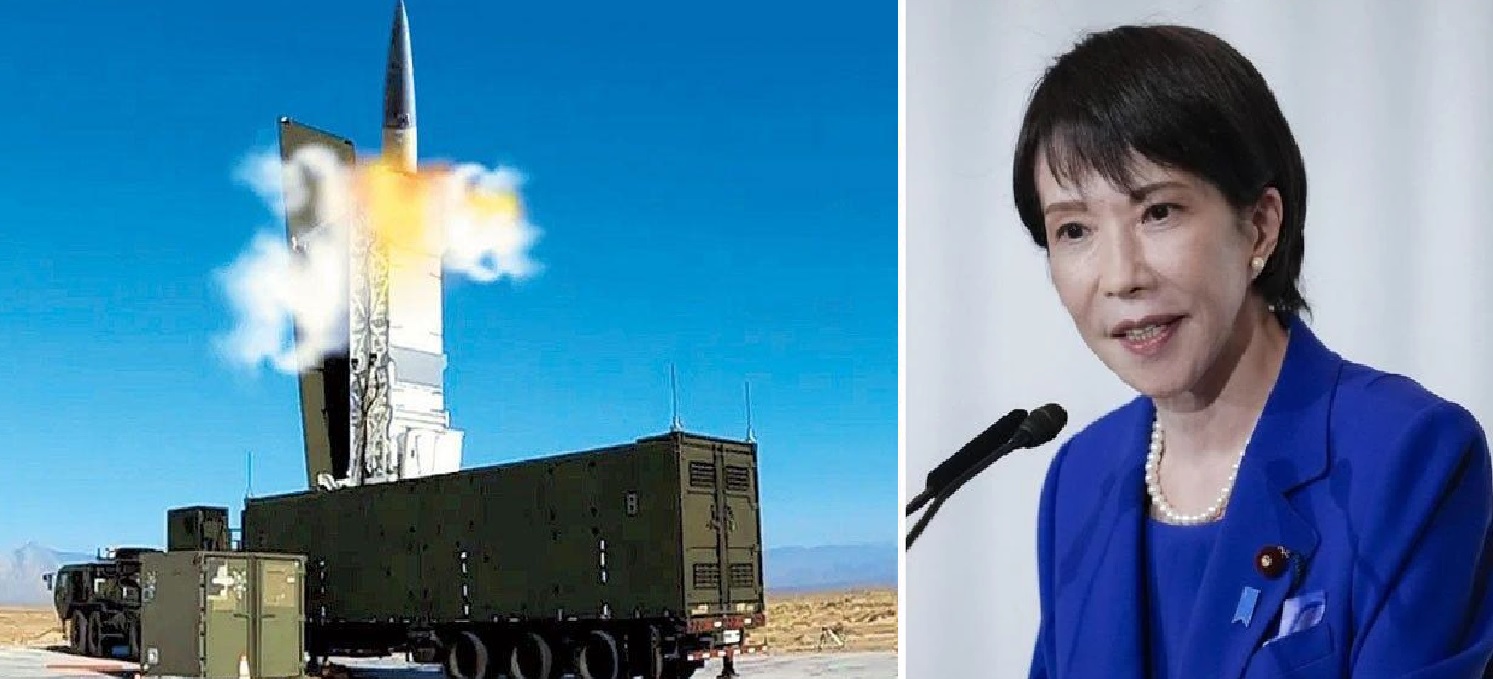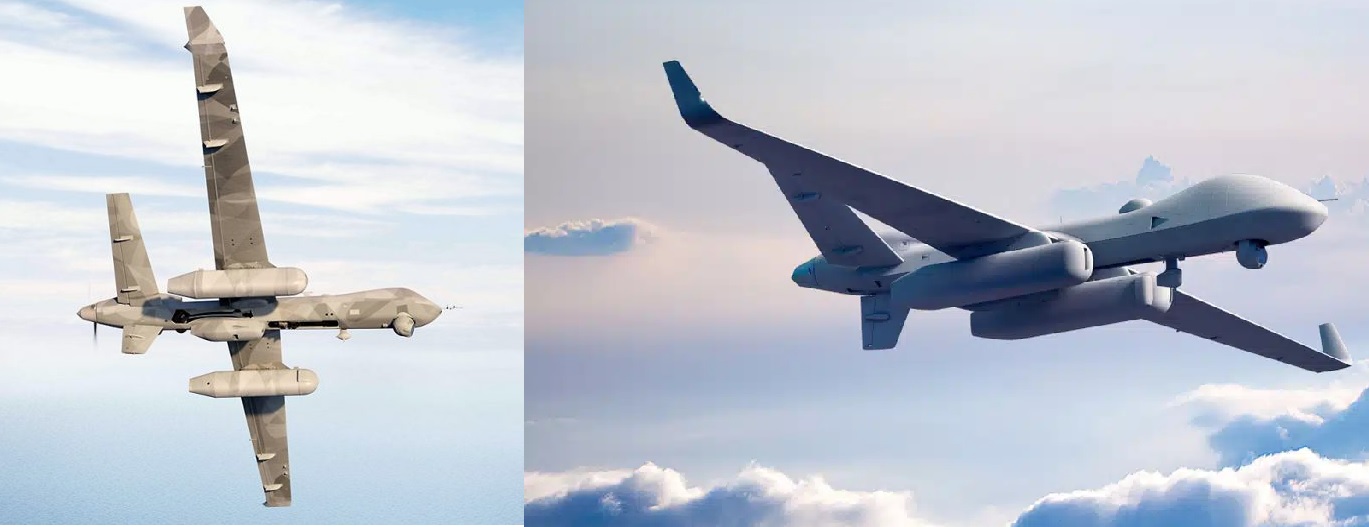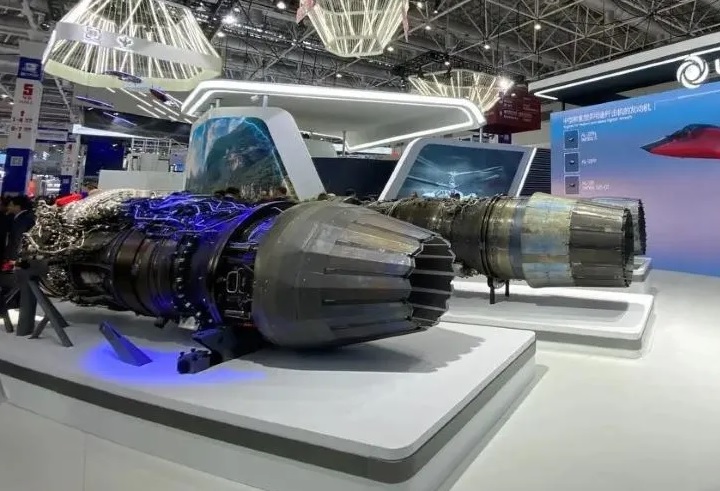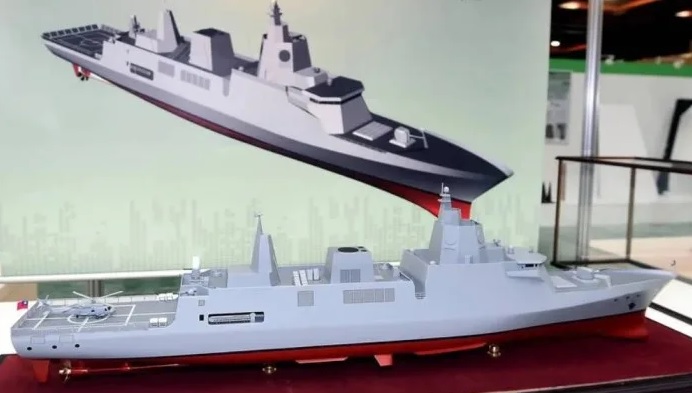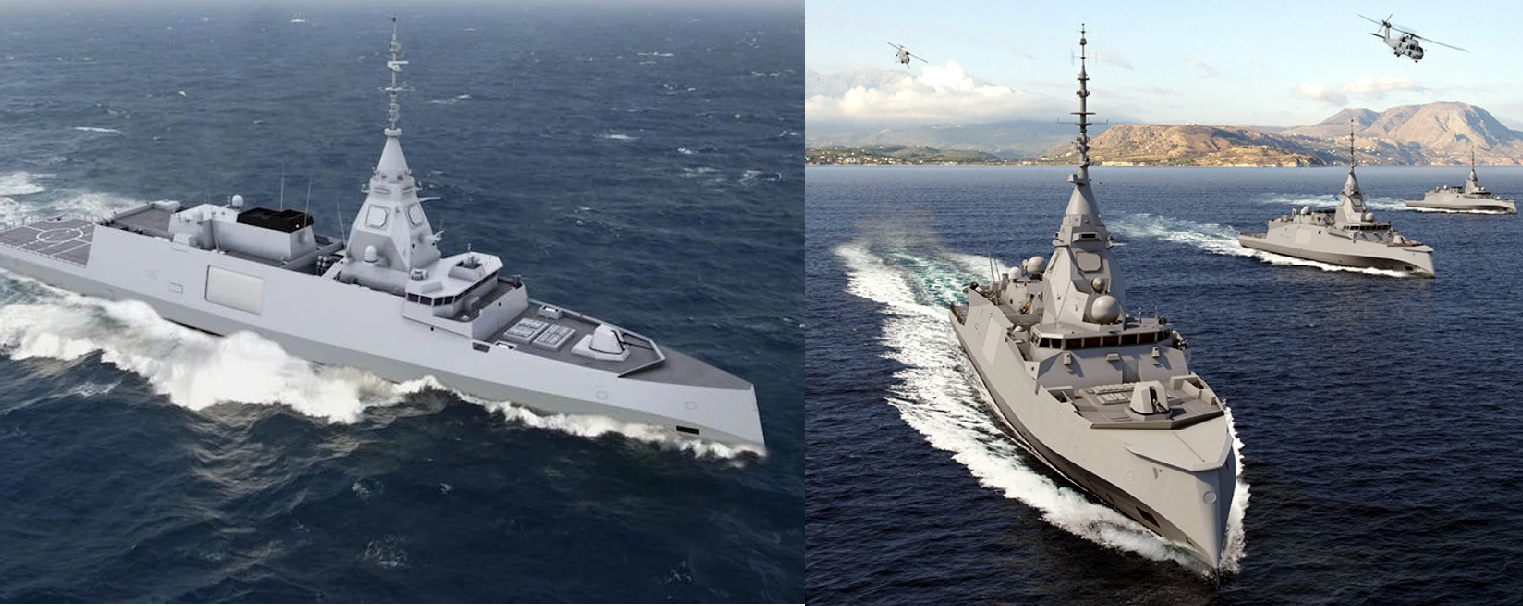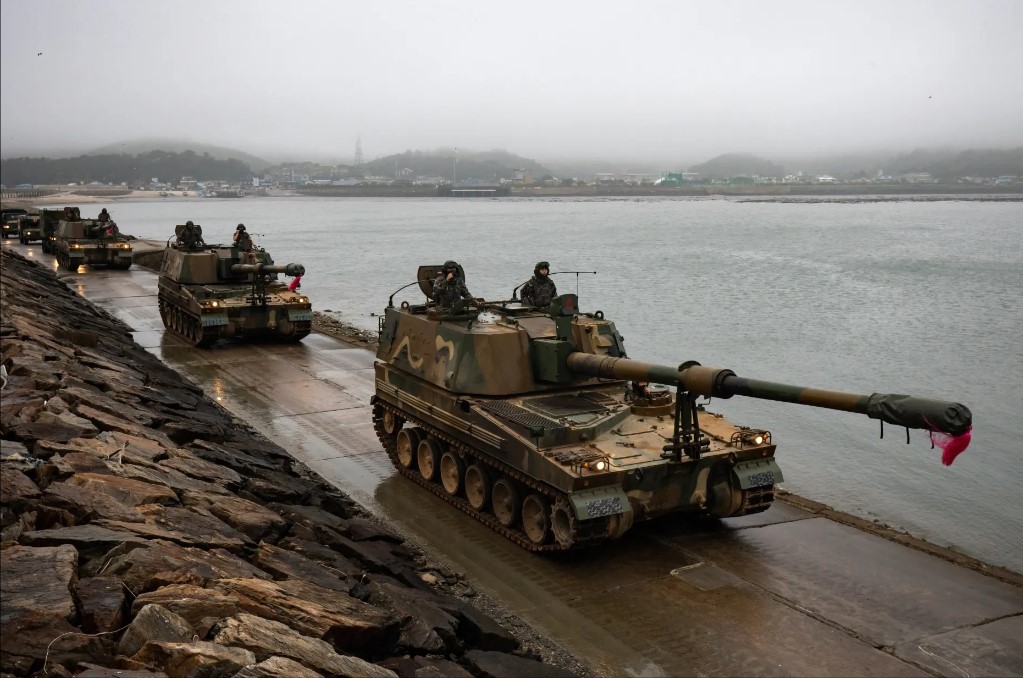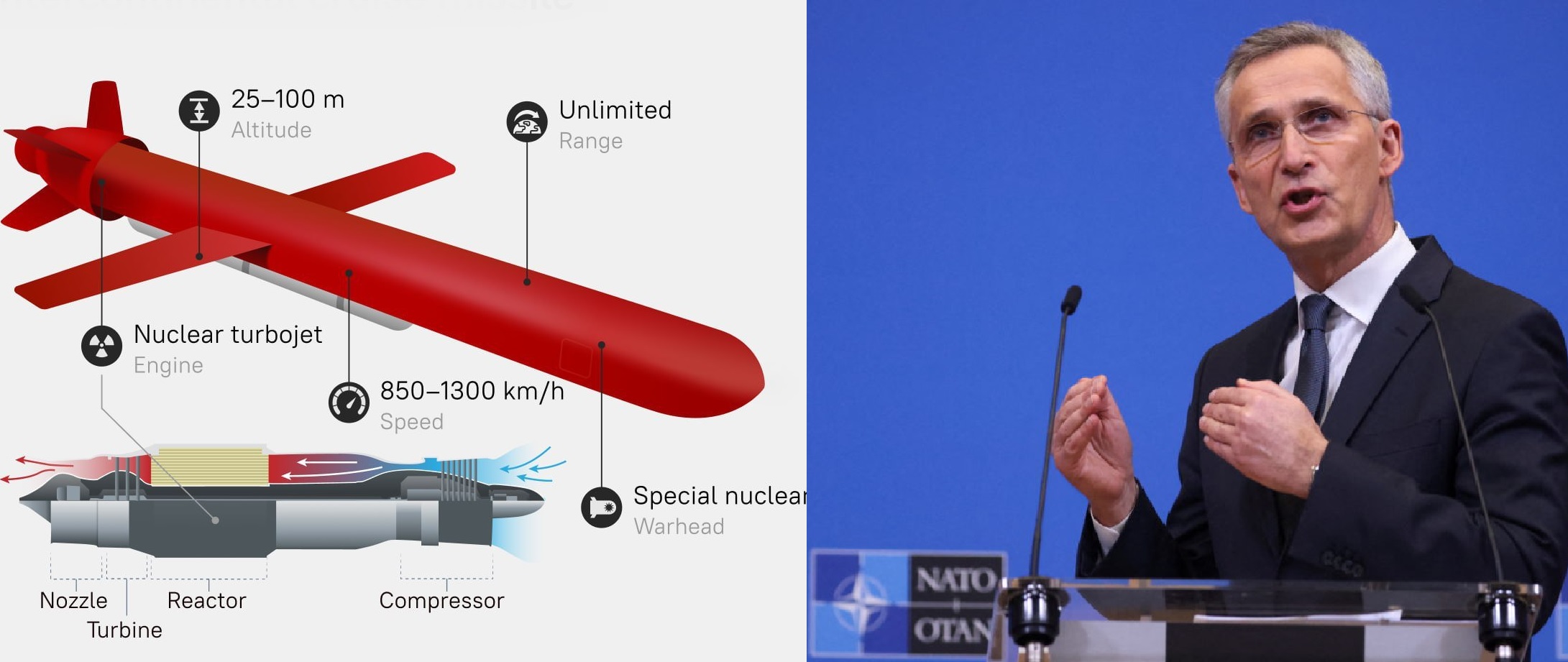World
In a landmark step toward the future of air combat, a U.S. Air Force F-22 Raptor pilot has, for the first time, directly controlled a General Atomics MQ-20 Avenger stealth drone from inside the fighter’s cockpit during an operational flight. The breakthrough demonstration, confirmed Monday by General Atomics, Lockheed Martin, and L3Harris, marks a pivotal advance in America’s push toward crewed-uncrewed teaming. First-of-Its-Kind Test on the Nevada Range The test took place over the Nevada Test and Training Range, where an F-22 pilot used a ruggedized tablet inside the cockpit to issue real-time commands to the MQ-20.The interface—powered by open-architecture software from Lockheed Martin and secure datalinks developed by L3Harris—allowed the pilot to control the drone’s flight paths, sensor tasks, and mission functions without relying on ground operators. General Atomics described the event as “a significant step toward operational autonomy,” demonstrating that frontline stealth fighters can command loyal wingman drones during high-threat missions. How It Worked: A Cockpit Tablet as a Drone Command Center Instead of complex new cockpit hardware, the test relied on a plug-and-play tablet interface that connected to the F-22’s mission systems.According to engineers familiar with the system: The pilot could assign the MQ-20 surveillance routes Redirect the drone toward simulated targets Task its onboard sensors for reconnaissance Maintain secure bidirectional communication through encrypted datalinks This lightweight approach is designed to allow older fighters such as the F-22 and F-16 to integrate drone control rapidly, without extensive redesigns. Boost for the Air Force’s CCA Program The demonstration is a major component of the Air Force’s emerging Collaborative Combat Aircraft (CCA) initiative, which aims to field autonomous “loyal wingman” drones capable of: scouting ahead of crewed aircraft carrying additional weapons providing electronic warfare support acting as decoys or jammers absorbing risk during early strikes The MQ-20 Avenger, with its jet engine, internal weapons bay, and low-observable design, is widely expected to be a frontrunner among platforms considered for CCA experiments. Air Force leadership has repeatedly emphasized that fifth-generation jets like the F-22 and F-35 will increasingly operate alongside AI-enabled drones to break through contested air defenses. Industry Collaboration Accelerates Progress General Atomics said the test validates years of investment in open mission systems, allowing different defense companies to integrate components without proprietary roadblocks.Lockheed Martin engineers added that these modular designs will help the Air Force scale future drone-fighter teaming much faster than previous modernization programs. L3Harris, responsible for the datalink, noted that the demonstration proved secure communications even in conditions simulating electronic warfare—a crucial requirement for operations against near-peer adversaries such as China or Russia. A Glimpse Into Future Air Warfare Defense analysts say this test marks the “beginning of a new era” in U.S. airpower, where a single pilot may eventually direct multiple AI-driven drones in complex missions.Future fighters like the Next Generation Air Dominance (NGAD) will likely be built around the concept of leading drone teams, using them to overwhelm enemy defenses and extend the reach of U.S. forces. With Monday’s milestone, the Air Force has taken one step closer to that vision—where human pilots retain strategic control, and autonomous systems execute the dangerous tasks that would otherwise put lives and expensive aircraft at risk.
Read More → Posted on 2025-11-19 12:04:52India
India’s naval modernisation drive is poised for a major leap as Mazagon Dock Shipbuilders Limited (MDL) confirmed that the Indian Navy is preparing to issue a new destroyer tender worth ₹70,000–80,000 crores ($8–9 billion). According to senior MDL officials, the long-awaited project could take the shape of either the Next-Generation Destroyer (NGD)—also known as Project-18—or an unexpected Project-15C class, a follow-on to the Visakhapatnam-class destroyers. The revelation marks the first public acknowledgement of a possible Project-15C, a development that could reshape India’s destroyer roadmap. Officials explained that a P-15C class could serve as a technological bridge between today’s Visakhapatnam-class (Project-15B) and the much more complex NGD, helping reduce program risk and accelerate fleet intake. Project-15C Surfaces as New Contender The Project-15 family has defined India’s frontline destroyer capabilities for nearly three decades—beginning with the Delhi-class, followed by the Kolkata-class (P-15A), and the Visakhapatnam-class (P-15B). The newest ships incorporate advanced stealth shaping, long-range AESA radar suites, new-generation sonar, improved survivability, and expanded VLS-based missile firepower. However, the Project-18 NGD aims to be an entirely new design featuring massive jumps in automation, survivability, integrated electric propulsion, multifunction radar masts, directed-energy weapon compatibility, and larger missile loadouts. With such complexity, timelines remain long. A P-15C class, therefore, is emerging as a realistic interim solution. MDL officials said the Navy may pursue this option to maintain construction continuity while mitigating NGD risks. How Project-15C Would Improve Over P-15B Although formal design parameters remain undefined, naval planners and MDL engineers broadly expect P-15C to incorporate: 1. Larger Vertical Launch Capacity Expanded VLS cells for Barak-8ER, BrahMos Block-II/III, and possibly Nirbhay or future Long-Range Land Attack Cruise Missiles (LR-LACMs). Improved configuration for quad-packed short-range interceptors. 2. More Powerful Radar & Combat Systems Upgraded MF-STAR derivative or new AESA radar with extended target tracking range. Enhanced multi-threat processing (ballistic, hypersonic, saturation attacks). Next-gen Combat Management System (CMS) designed to feed into NGD-level network warfare. 3. Better Stealth and Reduced Infra-Red Signature Re-shaped superstructure and exhaust cooling systems based on lessons from NGD modelling. Composite materials for masts and upper deck structures. 4. New-generation Electronic Warfare Suite Indigenous EW/ESM/ECM system capable of countering modern electronic-attack aircraft, drones, and sea-skimming missiles. Integration of DIRCM (Directional Infrared Countermeasures). 5. Multi-layered Anti-Submarine Warfare Upgrades New towed-array sonars with wider bandwidth. AI-aided submarine tracking algorithms. Larger hangar/deck to operate future heavy ASW helicopters or UAVs. 6. Power and Space Margins for Directed-Energy Weapons Higher electrical generation capacity for future: Laser CIWS, High-power jammers, Railgun prototypes (NGD-compatible reserve space). Next-Generation Destroyer (NGD): The End Goal When the NGD is eventually cleared, it is expected to be India’s largest and most advanced surface combatant ever built. Indicative NGD Features (Concept Design): Displacement: 10,000–13,000 tonnes Integrated Electric Propulsion (IEP) Dual-band AESA radars rivaling USN DDG-1000/Arleigh Burke Flight III 128+ VLS cells Laser-based CIWS Autonomous unmanned wing (UAVs + USVs + UUVs) Advanced stealth shaping Bigger flight deck for multiple helicopters A P-15C project thus acts as a stepping stone, proving technologies before NGD’s full-spectrum integration. Why the Navy May Prefer a P-15C Before NGD Shorter delivery timeline — P-15B’s design is mature, enabling rapid adaptation. Lower risk and cost — NGD’s R&D budget and technical complexity are significantly higher. Immediate fleet requirement — China’s naval expansion demands India maintain destroyer strength through the early–2030s. Workforce & yard continuity — Keeps MDL production lines active until NGD is finalised. India–Japan Design Link: Early but Significant Responding to speculation surrounding a possible Indo-Japanese destroyer collaboration, MDL clarified that discussions are currently “very, very early stage.” No MoU has yet been signed for a joint destroyer design. However, India and Japan have already progressed cooperation on the UNICORN integrated mast system, an advanced radar/communication mast installed on Japanese Mogami-class frigates. The agreement may require limited design exchange for future Indian warships, but officials stressed that complete shared destroyer designs remain unlikely. The Warship Design Bureau (WDB)—the Navy's in-house design body—continues to lead Project-18 and all indigenous design lines. Submarine Programs: P-75 and P-75I Move Forward MDL confirmed that commercial negotiations for three additional P-75 Scorpene-class submarines were completed months ago and the project is now awaiting final approval. Meanwhile, negotiations for the ambitious Project-75I air-independent-propulsion submarine series—to be built with Germany’s TKMS—are expected to finish by December, with contract signing targeted for March. P-75I will feature more than 60 percent indigenous content, significantly higher than past submarine programs, paving the way for export opportunities and deep technical transfer. MDL officials said the knowledge gained from P-75I would unlock decades of benefits including regional maintenance contracts and possible Asian and South American export orders. LPD Project: India Eyes Large Amphibious Ships MDL also confirmed an exclusive MoU with Swan Shipyard (SDHI) for the Indian Navy’s ₹40,000-crore Landing Platform Dock (LPD) program. SDHI’s Pipavav shipyard hosts India’s largest drydock—critical for constructing 200-metre-long amphibious assault vessels. The four-ship LPD project is expected to select a winning bid in over 12 months, and the Navy may now drop its earlier mandate for a foreign design partner, favouring indigenous architecture. Frigate Programs: Nilgiri-Class Deliveries Accelerate MDL is preparing to deliver the third Nilgiri-class (P-17A) frigate later this year, with the fourth to follow in the next financial cycle. The remaining three P-17A frigates under GRSE are progressing in parallel. A follow-on Project-17B frigate class is now approaching issuance of its Request for Proposal, likely within months. Mine Countermeasure Vessels and Future Projects The Navy’s long-delayed Mine Counter Measure Vessel (MCMV) program is expected to release an RFP in the next 3 to 4 months. The requirement includes 12 vessels worth ₹40,000 crores, to be constructed across two shipyards. These programs join the ongoing Next-Generation Missile Vessels (NGMV) and Next-Generation Corvettes (NGC) initiative, forming the backbone of the Navy’s expansion under a rapidly evolving maritime security environment dominated by China’s naval rise and Indo-Pacific contestation. A Defining Decade for Indian Naval Power With destroyers, frigates, submarines, and amphibious ships all entering new procurement phases, the Indian Navy is embarking on one of the largest multi-platform expansion cycles in its history. The upcoming decision on P-15C versus NGD will determine the trajectory of India’s surface combatant fleet for the next two decades. For MDL, which leads most major warship programs, the next few years are set to bring both record workloads and historic technological milestones.
Read More → Posted on 2025-11-19 11:58:56Space & Technology
A major outage at internet infrastructure giant Cloudflare briefly broke a massive portion of the global web on Tuesday, disrupting access to X, ChatGPT, Downdetector, and thousands of other websites across continents. Because Cloudflare sits in front of an estimated 20% of all active websites worldwide, even a single internal failure resulted in widespread slowdowns, error messages and complete service outages for millions of users. A Routine Update Turns Into a Global Web Shock The disruption began around 12:03 UTC, when Cloudflare reported “internal service degradation” and warned that multiple services might be intermittently impacted. As the issue spread, major platforms started showing 500 errors, failed logins and frozen feeds. Downdetector’s own reporting tools struggled, and global traffic slumped as Cloudflare’s edge network began rejecting requests. While rumours swirled of a major cyberattack, Cloudflare confirmed the issue was not caused by hackers. Preliminary findings pointed instead to an unexpected interaction between a latent software bug and a routine configuration update that triggered cascading failures across its application services. Social Media, AI Tools, Games and Banking Apps Affected The outage hit a wide range of platforms — from social media and AI services to games, fintech applications and cloud-based enterprise systems. Users across Asia, Europe and North America reported issues with: X (formerly Twitter) OpenAI’s ChatGPT Spotify, Uber, Canva, Riot Games services, and numerous crypto exchanges Cloudflare-protected government, banking, and public-service portals Some websites became totally inaccessible, while others loaded only partially or intermittently, depending on which Cloudflare data centers were affected. How Cloudflare Responded: Key Status Updates Cloudflare issued a series of real-time updates throughout the day, documenting the repair process step-by-step. Issue Identified and First Fix Deployed By 13:09 UTC, engineers had identified the core problem and began rolling out a fix. Cloudflare also noted temporary limitations, including disabling WARP access in London during remediation. Shortly afterward, Access and WARP services recovered, returning to normal error levels. Partial Recovery – Continued High Error Rates Between 14:22 and 15:23 UTC, Cloudflare reported that application services remained unstable and that some customers could still face dashboard login issues, latency spikes, and intermittent failures. Engineers continued working through regional problems and clearing remaining error queues across the network. Global Recovery Takes Hold By 16:27 UTC, Cloudflare confirmed that errors and latency were steadily improving, though some users still experienced intermittent failures. The company noted that bot scores — used to assess and filter suspicious traffic — would also be affected until full recovery was achieved. Current Status (Most Recent Update) At 17:14 UTC, Cloudflare issued its latest update: “We continue to monitor the system through recovery and we are seeing errors and latency return to normal levels. A full post-incident investigation and details about the incident will be made available ASAP.” This message marks the transition from active remediation to post-recovery monitoring, indicating that normal traffic patterns are returning across the network. Why One Company’s Glitch Broke Part of the Internet The outage highlights Cloudflare’s position as a critical, though often invisible, foundation of the modern web. Unlike a single website going down, Cloudflare’s malfunction affected every service that depends on its global network: DNS routing DDoS protection Content delivery acceleration API gateways and zero-trust security layers When these layers fail simultaneously, the result can feel like a partial shutdown of the internet itself. Experts warn that such incidents raise important questions about centralisation in internet infrastructure — with Cloudflare, Amazon Web Services, Microsoft Azure and Google Cloud becoming massive “choke points” where failures have global consequences. No Data Breach, No Attack — But a Major Lesson Cloudflare reiterated that no data breach occurred and that the outage was not the result of an attack. Instead, it was a rare internal systems failure compounded by scale. A full, detailed post-incident report is expected soon, which will outline exactly how the bug was triggered and what measures will be taken to prevent a repeat. A Reminder of the Internet’s Fragility For millions of users, the outage was a temporary inconvenience. But for businesses and governments, it was a reminder that the internet is far more interconnected — and vulnerable — than it appears. When a single configuration error at a single company can cause outages for 20% of the global web, the stakes of robust, diversified digital infrastructure become clearer than ever.
Read More → Posted on 2025-11-18 17:51:52World
In a move underscoring Washington’s accelerating efforts to harden Taiwan’s air-defense shield, the U.S. Department of Defense has awarded Raytheon a firm-fixed-price contract valued at $698,948,760 for the production of NASAMS (National Advanced Surface-to-Air Missile System) fire units destined for the island. The award, issued on 17 November 2025 through the U.S. Army Contracting Command at Redstone Arsenal, forms a central pillar of a broad Foreign Military Sales (FMS) package aimed at bolstering Taipei’s layered air-defense network. The contract, scheduled for completion by 28 February 2031, will see all work conducted at Raytheon’s facilities in Tewksbury, Massachusetts, reflecting a long-term industrial commitment aligned with the United States’ evolving Indo-Pacific security strategy. For Taiwan, the delivery timeline highlights not an emergency purchase, but a multi-year strategic build-out of air-defense forces designed to withstand the early phases of a high-intensity conflict. A Contract with Strategic Weight The Pentagon’s announcement comes against the backdrop of increasing Chinese military pressure around Taiwan, including record numbers of PLA aircraft breaching the island’s air-defense identification zone and expanding use of drones, cruise missiles, and long-range precision fires in regional exercises. Washington’s decision signals a clear message: Taiwan’s ability to defend its critical infrastructure — especially airports, command nodes, fuel depots, radar stations, and military bases — remains a U.S. strategic priority despite diplomatic backlash from Beijing. The $698.9 million contract forms a major component of a previously approved $1.16 billion FMS package cleared in October 2024, which covers three NASAMS systems, associated AMRAAM-ER missiles, training, logistics, and integration support. The newly awarded portion focuses specifically on NASAMS fire units, radars, command-and-control nodes, and support equipment, while the missile procurement will be executed under separate contracts. NASAMS: A Proven, Evolving Air Defense System Developed jointly by Kongsberg Defence & Aerospace of Norway and Raytheon, NASAMS has grown into one of the world’s most widely adopted medium-range air-defense systems. Originally fielded by Norway in the 1990s, NASAMS has since been integrated into the air-defense architecture of more than a dozen nations — including the United States, where it protects the airspace over Washington, D.C. At its core, the system uses the AIM-120 AMRAAM, a radar-guided missile employed by numerous Western fighter jets. This commonality simplifies logistics, allows shared stockpiles, and ensures rapid replenishment in wartime. NASAMS configurations typically include: AN/MPQ-64 Sentinel 3D radar Networked Fire Distribution Center (FDC) Electro-optical and infrared sensors Multiple canister launchers, dispersed for survivability Successive upgrades — NASAMS 2 and NASAMS 3 — introduced Link 16 tactical data link, integration of AIM-9X and AMRAAM-ER, and improved sensor fusion. AMRAAM-ER, in particular, extends engagement ranges beyond 50 km, enhancing defense against cruise missiles, drones, and aircraft. The system’s performance in Ukraine has significantly boosted its global reputation. According to NATO and Ukrainian officials, NASAMS has achieved high interception rates against Russian Kh-101, Kalibr, and other cruise missile threats, demonstrating reliability under real wartime conditions. Why NASAMS Matters for Taiwan Taiwan’s air-defense ecosystem is already dense, anchored by the Patriot PAC-3, indigenous Sky Bow II/III, mobile Avenger/Stinger, and a growing fleet of anti-drone systems. But each asset plays a specific role — and NASAMS fills a crucial gap. 1. The Medium-Range Layer Taiwan Needed Patriot excels at high-altitude and ballistic missile interception. NASAMS, by contrast, is optimized for medium-range engagements, countering: cruise missiles flying low to evade radar, swarm drone attacks, stand-off munitions, and conventional aircraft conducting saturation strikes. Its distributed launcher architecture, which can be spread over 20+ kilometers, increases survivability against PLA pre-emptive missile barrages. 2. Unmatched Interoperability Because Taiwan’s fighter jets already use AMRAAM, the island gains immediate logistical efficiency: shared missile stockpiles across air and ground forces, simplified maintenance chains, faster rearmament during high-intensity conflict. This interoperability also allows Taiwan to integrate with U.S. and NATO networked systems, ensuring smoother cooperation in crisis scenarios. 3. A Complication for PLA War Planning With NASAMS joining Taiwan’s defensive grid, China’s People’s Liberation Army must account for: more dispersed targets, more layers of interception, more survivable radar nodes, and more hardened C2 networks. This increases the number of critical points China must suppress or destroy in the opening minutes of a conflict — raising the operational cost and uncertainty for Beijing. A Long-Term U.S.–Taiwan Security Partnership The NASAMS deal offers more than firepower; it reflects a deepening long-term defense partnership between Washington and Taipei. The six-year production and integration timeline signals that U.S. support is not episodic but structural, tied into defense-industrial planning that will stretch into the next decade. It strengthens Raytheon’s U.S. manufacturing base, ensures continuity of skilled labor, and integrates Taiwan into a growing global NASAMS community, including Finland, Spain, Lithuania, Australia, Qatar, Hungary, and Ukraine. This shared network will allow Taiwan to participate in future cooperative upgrades, data-exchange frameworks, training programs, and joint threat assessments. A Clear Signal Amid Rising Geopolitical Tensions For potential adversaries, the message is unambiguous:Taiwan’s airspace is becoming more layered, more redundant, and significantly harder to penetrate. The NASAMS acquisition strengthens the island’s defenses not just technically, but symbolically. It underscores the United States’ commitment to supporting Taiwan’s resilience while reinforcing a global coalition of nations adopting the same proven system. As China accelerates military pressure, cyber operations, and airspace incursions, the new NASAMS contract stands as a strategic reminder that Taiwan’s defenses — and Washington’s resolve — are only becoming stronger.
Read More → Posted on 2025-11-18 17:28:52India
India has issued a Notice to Airmen (NOTAM) over the Andaman & Nicobar region, announcing a large no-fly zone from 25 November 2025, 0330 UTC, to 27 November 2025, 1200 UTC, indicating preparations for likely missile tests in the eastern Indian Ocean. The restricted area, mapped southwest of the Andaman Islands, stretches nearly 490 km across the Andaman Sea. Its elongated shape matches previous test corridors used for long-range ballistic or cruise missile trials, suggesting India may be readying a high-range weapon or naval strike system for evaluation. The Andaman & Nicobar Islands hold major strategic importance as home to India’s only Tri-Service Theater Command, giving the military direct reach over the Bay of Bengal and access to the approaches of the Malacca Strait, one of the world’s busiest maritime chokepoints. India has frequently used this region for long-range missile experiments, ship-launched strikes, submarine-launched weapon tests, and joint operations involving the Navy and Air Force. The latest NOTAM aligns with India’s increasing tempo of missile development activities in the Indo-Pacific, where regional military competition continues to intensify. Civilian air traffic transiting between Southeast Asia and mainland India is expected to reroute around the declared danger zone during the 48-hour window. Maritime traffic in the area will also receive navigational advisories, as falling booster stages or debris from missile trials could pose hazards. Such notifications are routine but remain a strong indicator that a live firing or high-altitude test is imminent. While India has not officially confirmed the type of missile to be tested, announcements usually follow after a successful launch. With the NOTAM active until 27 November, defence analysts are watching closely for what may be another significant milestone in India’s expanding long-range strike and strategic deterrence capabilities in the eastern Indian Ocean.
Read More → Posted on 2025-11-18 17:11:13Space & Technology
When India’s ocean scientists talk about the deep sea, they describe it with the same excitement that astronomers use for distant planets. Except this world is not light years away — it begins just a few kilometres under the waves. Now, India is preparing to go deeper than any nation has ever lived or worked before. In an ambitious leap under the Deep Ocean Mission, the National Institute of Ocean Technology (NIOT) has begun shaping plans for a permanent underwater research laboratory at 6,000 metres depth — a place so extreme that sunlight never reaches it, temperatures hover near freezing, and pressure is more than 600 times what humans feel at the surface. If completed, this would be the deepest underwater lab in human history — a kind of “Ocean ISS” anchored to the seafloor of the Indian Ocean. A Vision That Begins in the Darkness The idea did not appear suddenly. For years, Indian researchers have mapped seafloors, sent robots into trenches, and built prototypes of pressure-resistant spheres in workshops in Chennai. Slowly, the dream formed: If astronauts can live above Earth for months, why can’t aquanauts live beneath it? The initial steps are already underway. NIOT is testing a 500-metre demonstration habitat, a smaller module meant to teach engineers how to handle life support, pressure, communication and docking systems. Only after this will India attempt the bold jump toward 6,000 metres, where every detail — every weld, every cable — must be engineered for a world that crushes anything unprepared. This future habitat will likely be a cluster of titanium and composite modules, interconnected like a space station, with observation ports, laboratories, crew quarters and docking points for submersibles like Matsya 6000, India’s soon-to-be flagship deep-sea vehicle. What Life Looks Like Six Kilometres Down At 6,000 metres, humans have barely spent minutes — never days, never weeks. But India’s proposed lab aims to change that. If scientists live there, their work could transform our understanding of Earth. Studying Life That Shouldn’t Exist The deep ocean hosts creatures that look almost alien — transparent fish, luminous worms, pressure-loving microbes. Observing them long-term could explain how life survives without sunlight and whether similar forms might exist on icy moons like Europa or Enceladus. Unlocking the Microbial Frontier India is already building a Deep-Sea Microbial Repository, and a 6,000-metre lab would feed it with samples found nowhere else on the planet. These microorganisms may help create: new antibiotics, powerful industrial enzymes, eco-friendly plastics breakdown systems, and even skin-care or medical compounds evolved for life under crushing force. Watching the Earth Shift From Below A lab this deep could sit near tectonic activity — the massive, grinding edges of Earth’s plates. Instruments around it could: track micro-earthquakes, measure seafloor movement, study hydrothermal vents, and help understand how tsunamis begin. Tracking Carbon and Climate in the Abyss Most of Earth’s trapped heat and carbon ends up in the deep ocean. A permanent habitat would finally give scientists long-term, real-time data on how the deep sea responds to climate change — a mystery that climate models desperately need solved. Who Else Has Tried — and How India Goes Beyond Them Underwater laboratories are not new, but none comes remotely close to India’s dream. Aquarius Reef Base in Florida sits at only 19 metres — it is the world’s only functioning undersea lab today. Proteus, being built by Fabien Cousteau, will also be at shallow depth — around 20 metres, with deeper satellites reaching about 70. The UK company DEEP is working on habitats around 200 metres, suitable for continental shelf science. The only project that hints at going deeper is China’s planned deep-sea station at about 1,800 metres — still far from India’s planned 6,000 metres. In other words, no nation has ever attempted a liveable lab in the hadal zone. India would be the first to step into that darkness for real. Engineering at the Edge of Survival Nothing about a 6,000-metre habitat is ordinary. India’s engineers are preparing for challenges that few have even studied: Pressure so high that one small flaw could instantly collapse a structure. Communication delays caused by sound traveling unevenly in deep water. Power lines that must stretch kilometres through rough ocean, without breaking. Life-support systems that must run flawlessly for weeks in a place no human can step outside to repair. The materials alone — from the titanium hulls to the special acrylic viewports — must endure forces we rarely encounter on Earth. This is why the mission is long, why the target year is near 2047, and why every test, every dive of Matsya 6000, every simulation matters. More Than Science: Why This Matters If India succeeds, its underwater lab will not only unlock deep-sea secrets — it will shift global scientific leadership. A functioning station at 6,000 metres would make India a pioneer in high-pressure engineering and ocean technology, while giving the country a major push in the blue economy through breakthrough research in biotechnology, advanced materials, and deep-ocean minerals. It would also sharpen the world’s understanding of natural hazards by improving tsunami prediction systems and long-term climate models based on real data from the abyss. At the same time, the habitat would serve as a testing ground for future exploration beyond Earth, helping scientists study how humans adapt to long-duration life in isolated and extreme environments — knowledge crucial for Moon and Mars missions. Most importantly, such a station would finally open access to the last great frontier on the planet, a realm still more mysterious than Mars and more unexplored than the Moon. A New Era Beneath the Waves In the coming decades, when the first team of Indian aquanauts descend to live in this extreme, silent world, they will not just be exploring the deep sea — they will be revealing an entire hidden planet that has existed beside us, untouched, since the beginning of time. If space is humanity’s upward journey, then the deep ocean is its inward one. And India is preparing to lead that journey into the darkness, to a depth where no country has ever dared to build a home.
Read More → Posted on 2025-11-18 16:31:12World
Russia has quietly crossed a major milestone in its combat aviation exports, delivering the first Su-57E fifth-generation fighters to a foreign customer. Officially, Moscow will not say who bought them. But leaked Russian documents, earlier Algerian statements, and years of speculation all point in one direction: Algeria. First Su-57E Export Delivery Confirmed On 18 November 2025, at the Dubai Airshow 2025, United Aircraft Corporation (UAC) CEO Vadim Badekha confirmed that two Su-57E fighters had been handed over to an unnamed international customer and are now on combat duty. He added that the buyer is “satisfied” with the aircraft’s performance, calling the deliveries a sign that Russia’s fifth-generation fighter is ready for the export market. The Su-57E is the export version of Russia’s Su-57 “Felon”, designed to combine stealth, supercruise, advanced sensors, and a wide mix of air-to-air and air-to-surface weapons. While export jets are usually delivered with downgraded electronics or software, Russian media suggest the Su-57E remains close in capability to domestic models, especially in radar and long-range missile employment. Moscow has framed the export as proof of “technological sovereignty”—a sign that, despite sanctions and wartime pressure on its defense industry, Russia can still mass-produce and sell high-end combat aircraft abroad. Black Mirror Leak: Rostec Papers Point to Algeria In early October 2025, hacker collective Black Mirror released a trove of more than 300 internal files allegedly taken from Russian defense conglomerate Rostec. The documents, reported by several investigative outlets, appear to detail export pricing, delivery schedules and customer codes for Russian aircraft. One of those customers is listed under the code “012”, widely assessed to be Algeria. According to the leaked tables, this customer is scheduled to receive: 12 Su-57E fighters 14 Su-34E fighter-bombers with deliveries planned between 2024 and 2026. While the authenticity of every line in the leak cannot be independently verified, multiple defense outlets and analysts have judged the data credible and consistent with known Algerian procurement patterns and earlier rumors of a Su-57/Su-34 package aimed at replacing older Soviet-era strike aircraft. Algeria Already Claimed “First Su-57 Export Customer” Status Long before the Dubai announcement, Algerian state media had already declared that the country would be the first foreign operator of the Su-57E. In February 2025, Algerian outlets and international defense monitors reported that: Algeria had signed a contract for Su-57E fighters. Algerian pilots were training in Russia to operate the new jets. Deliveries were expected to start in 2025. Open-source defense databases and background notes on the Su-57 program also list Algeria as having ordered 14 Su-57E as part of a wider deal that includes Su-34 and Su-35 fighters, with initial deliveries slated for 2025–2026. This means that, even though UAC refuses to name the launch customer, the leaked Rostec files, Algerian announcements, and Western reporting all converge on Algeria as the most likely recipient of the first two Su-57E jets delivered in November 2025. What the Su-57E Brings to Algeria If Algeria is indeed the buyer, the Su-57E will sit at the top of its airpower pyramid as the country’s first fifth-generation-class fighter. Key capabilities the Su-57E is expected to add include: Low observability: reduced radar cross-section and shaping to make detection harder at long range. Advanced sensors: an AESA radar, IRST (infrared search and track), and electronic warfare suite for detection and jamming. Supercruise: sustained supersonic flight without afterburner, improving persistence and missile reach. Long-range weapons: ability to carry beyond-visual-range air-to-air missiles and stand-off air-to-surface weapons, including internally in its weapons bays. For Algeria, these features would allow deep-strike missions, air superiority, and stand-off deterrence far beyond what its current fourth-generation fleet can achieve. Algeria’s Current Air Force Fleet: From Flankers to Felons Even before the Su-57E, the Algerian Air Force (AAF) was already one of Africa’s most capable air arms, built largely around Russian-origin combat aircraft. According to recent open-source data and updated inventories, Algeria’s front-line fleet includes: Su-30MKA multirole fighters – around 60+ aircraft in service, with additional units on order; the backbone of Algeria’s air superiority and strike capability. MiG-29 variants – roughly 30–40 aircraft across upgraded MiG-29 versions, used as multirole and air-defense fighters. Su-24MK2 strike aircraft – around 30+ modernized Su-24 bombers, upgraded to the MK2 standard for precision strike. Su-35 – a newer generation of multirole fighters, with an initial batch already delivered in 2025 and more airframes on order, providing extended range and advanced radar. Su-34E – 14 aircraft on order, visible in the same leaked Rostec documents as part of Algeria’s package with Su-57E, likely aimed at relieving or replacing Su-24s in the long-range strike role. Su-57E – 12 aircraft on order according to the leaked papers, with at least two believed to have been delivered under the first export batch. Beyond its fighters, the AAF also fields a sizable support and training fleet, including Yak-130 and L-39 trainers, Mi-26 heavy-lift helicopters, Mi-28NE attack helicopters, and a growing fleet of Chinese-made UCAVs such as Wing Loong II, CH-3/CH-4, and WJ-700. These platforms give Algeria a mix of manned and unmanned strike options and robust pilot training capacity. Taken together, Algeria is evolving from a force centered on legacy Soviet fighters into one that combines 4.5-generation aircraft (Su-30MKA, Su-35) and fifth-generation capabilities (Su-57E), supported by modern strike bombers (Su-34E) and drones. Why Algeria Wants the Su-57E Algeria’s decision to pursue the Su-57E is shaped by strategic needs, long-standing defence partnerships, and practical modernization requirements. At the regional level, Algeria aims to maintain a qualitative edge over neighbouring air forces in North Africa and the Sahel. The introduction of a fifth-generation aircraft strengthens its position and enhances its overall deterrence capability. Algeria has also relied on Russian systems for decades, from training and maintenance networks to weapons integration. Adding the Su-57E and Su-34E to its inventory fits naturally into its existing structure. This continuity reduces logistical challenges, simplifies pilot conversion, and allows Algeria to build on the platforms and technologies it already operates. There is also a clear modernization need. Older aircraft such as the MiG-29 and Su-24MK2 are reaching their limits. The Su-34E offers an updated strike capability, and the Su-57E provides a long-term solution for air-superiority, deep-strike, and electronic-warfare roles that older aircraft can no longer fulfil effectively. Finally, Algeria’s options for purchasing Western fighters such as the Rafale or Eurofighter Typhoon are constrained by political considerations and export restrictions. Russia continues to be a reliable supplier for Algeria, making the Su-57E a practical and politically manageable choice. Strategic Impact for Russia and the Wider Market For Russia, exporting the Su-57E serves several purposes. It demonstrates that the Russian aerospace industry can still deliver fifth-generation technology despite sanctions and the pressures of ongoing military commitments. It also creates a new revenue stream for a defence sector facing higher production demands and fixed domestic pricing. The presence of the Su-57E on the export market places Russia in a position to offer an alternative to fighters such as the F-35 and J-20 in countries where Western or Chinese options may be limited. For Algeria, continued deliveries would create a tiered fighter force built around the Su-30MKA, Su-35, Su-34E, and Su-57E, supported by a growing fleet of UCAVs such as the CH-4 and Wing Loong II. This structure provides a balance of air-superiority, strike, and surveillance capabilities under a unified system based largely on Russian and Chinese equipment. As a result, Algeria would operate one of the most capable air forces in Africa and become one of the few countries outside NATO, Russia, and China to field a fifth-generation fighter, marking a significant step in its long-term defence modernization.
Read More → Posted on 2025-11-18 15:50:06World
The United States has withdrawn its Typhon Mid-Range Capability (MRC) missile system from Japan, Japanese media confirmed on Monday, ending a deployment that had triggered sharp diplomatic tension with China and stirred domestic unease inside Japan. The system, capable of launching Tomahawk land-attack cruise missiles and SM-6 air-defence missiles, had been positioned at the US Marine Corps Air Station Iwakuni in Yamaguchi Prefecture since September for the US-Japan “Resolute Dragon 2025” joint exercise. Although Tokyo had said the deployment was strictly temporary and would be removed “within around a week” after the conclusion of the exercise on September 25, the launcher remained in place for nearly seven weeks longer — remaining at the base until at least November 10, according to civic groups protesting in Yamaguchi and neighboring Hiroshima. By Monday, the Japanese Defence Ministry confirmed to local authorities that the system had been fully removed. However, officials offered no explanation for the long delay, leaving analysts questioning whether the extended stay was strategic, accidental, or politically constrained. A System Capable of Striking Beijing The Typhon system’s deployment was highly sensitive due to its range of up to 1,800 km, placing Beijing, Shanghai, and large stretches of eastern China well within potential strike distance.It was the first-ever deployment of this system on Japanese soil — a fact that drew immediate protests from both China and Russia. The United States had framed the deployment as an opportunity to test “rapid wartime transitions,” part of a broader plan to strengthen deterrence in the Indo-Pacific. However, the system’s extended stay — well beyond the exercise timeline — raised local fears that the deployment might become quasi-permanent, prompting civic petitions demanding its removal. Diplomatic Storm Over Taiwan Comments The withdrawal coincided with a dramatic deterioration in China–Japan relations sparked by recent remarks from Japanese Prime Minister Sanae Takaichi. Last week, Takaichi described a Taiwan Strait crisis involving the use of force as a “survival-threatening situation” for Japan — language that implies Japan could join the United States in military action should Beijing move against Taiwan. China reacted fiercely, accusing Takaichi of: “Seriously damaging bilateral ties” “Challenging the post-war international order” Beijing then issued a travel warning for Japan, cancelled multiple cultural and exchange programs, and lodged repeated diplomatic protests. Additional retaliatory steps are expected, as Tokyo has refused to retract Takaichi’s comments. Given this backdrop of escalating hostility, analysts say Washington and Tokyo likely saw the Typhon launcher as an unnecessarily provocative signal at a moment when both governments were trying to manage the fallout. US-Japan Defense Pact: What Security Washington Provides Tokyo The developments also shed light on the role of the US-Japan Security Treaty, the foundation of Tokyo’s national defense since 1960. Key Security Guarantees under the US-Japan Defense Pact 1. Mutual Defense ObligationsThe treaty commits the United States to defend Japan if the country is attacked. Unlike many alliances, this includes attacks on Japanese-administered territories, including the Senkaku Islands. 2. Forward Deployment of US ForcesJapan hosts roughly 50,000 US troops, the largest overseas concentration of American forces in the world. The bases provide: A rapid-response force against regional threats Intelligence, surveillance and reconnaissance (ISR) coverage Nuclear and conventional deterrence through US naval and air assets 3. Access to Advanced US Military TechnologyThe US assists Japan with: Ballistic missile defense (Aegis, Patriot PAC-3, SM-3) Fighter integration (F-35A/B) Advanced missile systems like Tomahawks (Japan will begin receiving these soon) Joint cyber and space defense projects 4. Joint Operations and PlanningTokyo and Washington cooperate on: Taiwan contingency planning Maritime security in the East China Sea Integrated air and missile defense Joint training to ensure interoperability between forces These guarantees form the backbone of Japan’s security — but they also create strategic dependence. The Typhon withdrawal has revived debate in Tokyo about whether Japan can continue relying so heavily on Washington as the strategic environment worsens. Why the US Pulled the System — Key Factors 1. Escalating China–Japan Diplomatic Tensions With Beijing already responding harshly to Takaichi’s Taiwan remarks, the presence of a US missile system capable of hitting mainland China risked turning a diplomatic dispute into a full-scale strategic crisis.The withdrawal likely served as a de-escalation gesture. 2. The Deployment Was Always Officially “Temporary” Japan had repeatedly said Typhon would be removed within a week of the exercise’s end. Its extended presence risked appearing dishonest or strategically ambiguous. Removing it allowed the US and Japan to return to the original temporary deployment narrative. 3. Local Political Pressure Inside Japan Civic groups in Yamaguchi and Hiroshima petitioned for the removal, warning that hosting a strike-capable US system could turn the region into a target during any conflict involving China. 4. Avoiding Accidental Escalation With China At a time when the US already has a Typhon system deployed in the Philippines, keeping additional systems in Japan may have risked reinforcing China’s claims that the US is building an “island-chain offensive network.” 5. Strategic Flexibility for Future Deployments The US is experimenting with mobile and rotational basing of mid-range missiles across the Indo-Pacific. Removing Typhon from Japan does not reduce capability — it simply repositions it for future use. Regional Fallout: South Korea Also Steps Back In a separate development, South Korea informed Japan that it would withdraw from a planned search-and-rescue exercise involving the Japanese Maritime Self-Defense Force.This follows Tokyo’s cancellation of aerial refuelling assistance for South Korean Air Force aircraft — a decision triggered by Seoul conducting training flights near the disputed Dokdo/Takeshima islets. The sudden chill between Seoul and Tokyo adds another layer of tension to an already strained regional environment. Wider Strategic Stakes Despite the withdrawal of the Typhon system, tensions across the Indo-Pacific remain high. Washington is steadily expanding its rotational missile deployments in the Philippines, strengthening its ability to respond around Taiwan and the South China Sea. At the same time, Japan is moving ahead with the purchase of Tomahawk cruise missiles and developing its own long-range strike capabilities, marking one of the most significant shifts in its post-war defence policy. Meanwhile, China has intensified military patrols, diplomatic warnings, and pressure campaigns, accusing both Japan and the United States of “external interference” in the Taiwan issue. These parallel moves underline a region growing more militarized, more unpredictable, and increasingly defined by the rivalry between the three major powers. This Withdrawal May Push Japan Toward Building Its Own Military Power Defense experts say the episode highlights a long-term strategic dilemma for Tokyo:Japan relies on US firepower, but the timing, location, and political risk of these deployments remain Washington’s decision — not Japan’s. This dependence, combined with rising threats from China, North Korea, and Russia, is likely to accelerate Japan’s ongoing military transformation. Possible Shifts in Japan’s Security Policy 1. Greater Emphasis on Indigenous Strike CapabilityJapan is already acquiring 400 Tomahawk cruise missiles, developing the Type-12 standoff missile, and investing in hypersonic systems.The Typhon episode may reinforce Tokyo’s desire to have domestic, permanently stationed long-range strike options that it controls fully. 2. Reduced Reliance on US Rotational DeploymentsJapan may increasingly prefer Japanese-owned missile systems on Japanese soil, rather than US systems that can be politically withdrawn or relocated. 3. Acceleration of Defense SpendingTokyo already plans to raise defense spending to 2% of GDP, one of the fastest increases in its post-war history. Events like this could drive calls for even greater investment. 4. Stronger Push for Constitutional DebateConservatives may use the incident to argue that Japan needs a more normal military, less constrained by Article 9 restrictions and less dependent on US strategic decisions. Conclusion The US withdrawal of the Typhon missile system from Japan marks more than the end of a temporary military deployment — it has become a symbol of the shifting power balance in East Asia. The move: Reflects the dangerous spike in China–Japan tensions, Highlights the delicate nature of US-Japan alliance management, and Reinforces growing calls in Tokyo for a more independent, self-reliant military posture. As geopolitical competition intensifies across the Indo-Pacific, Japan may emerge from this episode more determined than ever to strengthen its own military power, reduce strategic dependence on Washington, and prepare for a future where regional conflict is no longer unthinkable.
Read More → Posted on 2025-11-18 14:37:56World
South Korea has formally proposed military talks with North Korea to clarify the rivals’ disputed border line and reduce spiraling tensions, after repeated incursions by North Korean soldiers triggered concern over the possibility of an unintended armed confrontation. Rising Concern Over Border Violations South Korea’s Joint Chiefs of Staff (JCS) disclosed that its forces have fired multiple warning shots in recent months to repel North Korean troops that crossed the Military Demarcation Line (MDL)—the de facto land border inside the Demilitarized Zone (DMZ). According to Seoul, North Korean troops have been spotted repeatedly breaching the MDL since Pyongyang began large-scale construction works last year to reinforce its forward defensive positions. These activities reportedly include new trenches, concrete barriers, and expanded guard posts. North Korea has denied the accusations, claiming its soldiers have not crossed the line and warning of “unpredictable countermeasures” if Seoul continues issuing statements it calls provocations. South Korea Calls for Dialogue to Prevent a Clash On Monday, Kim Hong-Cheol, South Korea’s Deputy Minister for National Defense Policy, announced that Seoul is offering military talks aimed at preventing unintended armed incidents and reducing tensions. He noted that some of the recent border crossings may not have been deliberate, pointing out that many MDL markers installed after the 1950-53 Korean War have been lost due to weather, terrain changes, and lack of maintenance over decades. “Our offer is to avoid accidental clashes and maintain stability along one of the world’s most sensitive borders,” Kim said. Despite the proposal, officials in Seoul admitted that Pyongyang may ignore the outreach, as the North has refused dialogue with both South Korea and the United States since 2019. Frozen Diplomacy Since Collapse of Trump–Kim Talks North Korea has largely shut down communication channels since the breakdown of high-stakes nuclear negotiations between Kim Jong Un and former U.S. President Donald Trump. Trump has publicly stated that he remains open to another meeting, yet Kim insists that the U.S. must abandon its demand for North Korean denuclearization before any summit can resume — a condition the U.S. is unlikely to accept. South Korean analysts believe Seoul’s proposal aligns with efforts by President Lee Jae-Myung’s liberal administration to restore communication channels. But Pyongyang has criticized such attempts. In August, Kim Yo Jong, the influential sister of Kim Jong Un, described Seoul’s outreach as a “sinister intention” designed to blame North Korea for deteriorating relations. North Korea’s Hardening Stance The current security climate is further strained by North Korea’s unparalleled shift in policy last year, when Kim Jong Un: Abandoned peaceful reunification as a national objective Ordered the rewriting of the constitution to designate South Korea as a “permanent primary enemy” Accelerated construction of anti-tank barriers, minefields, and fortified positions South Korea’s military reports that Pyongyang has since planted additional mines and expanded its combat infrastructure along the frontier, signaling a long-term escalation strategy. One of the World’s Most Dangerous Borders The DMZ is a 248-km-long and 4-km-wide buffer zone that remains one of the most militarized frontiers on Earth. Key features include: Approximately 2 million landmines lining the area Dense clusters of barbed-wire fences and tank traps Tens of thousands of combat-ready troops stationed on both sides Constant surveillance from guard towers and remote sensors The Korean War ended in an armistice, not a peace treaty — meaning the two Koreas remain technically at war. What Comes Next? Experts say South Korea’s proposal is a test of North Korea’s intentions. Acceptance could signal a rare opening for military risk-reduction mechanisms. Rejection, however, may solidify concerns that Pyongyang is preparing for a more confrontational posture. Regional security watchers warn that any miscalculation along the fragile MDL — even a patrol stepping a few meters off course — could rapidly escalate into military exchange. For now, the ball lies in Pyongyang’s court, and Seoul continues to monitor the DMZ for further incursions.
Read More → Posted on 2025-11-18 14:17:12World
General Atomics Aeronautical Systems, Inc. (GA-ASI) and Sweden’s Saab are set to conduct a landmark demonstration showcasing an Airborne Early Warning & Control (AEW&C)–equipped MQ-9B, marking the first time a long-endurance Remotely Piloted Aircraft (RPA) will field a fully capable AEW system. The demo will take place at GA-ASI’s Desert Horizon flight operations facility in Southern California, with an MQ-9B fitted with Saab’s advanced AEW sensors. The event is expected to highlight a transformative capability: persistent, cost-efficient early-warning surveillance from an unmanned platform that can remain airborne far longer than manned aircraft. A New AEW Frontier GA-ASI has long promoted the MQ-9B series—SkyGuardian, SeaGuardian, the UK-specific Protector, and the in-development MQ-9B STOL—as the world’s most capable medium-altitude, long-endurance (MALE) unmanned aircraft. By integrating Saab’s proven AEW&C technology, the companies are attempting to push the platform into missions traditionally reserved for large aircraft such as the E-2D Hawkeye or Saab’s own GlobalEye. Saab is widely regarded as a global leader in airborne early warning systems. Its sensors provide long-range detection, robust tracking performance, and strong electronic surveillance capabilities. Combining these with the MQ-9B’s 40-hour endurance and broad satellite-communication (SATCOM) reach creates a new category of persistent airborne radar coverage. Why This Matters In many regions, AEW aircraft are scarce or financially out of reach. Naval carriers, for example, rely on short-range airborne coverage or expensive dedicated aircraft. By contrast, an MQ-9B equipped with AEW sensors can operate from small airfields or ships, offering: Persistent wide-area air surveillance Detection of cruise missiles, hostile drones, and low-observable threats Long-range tracking of fighter jets, bombers, and tactical munitions Reduced operating costs compared to manned AEW platforms “Adding AEW&C to the MQ-9B brings a critical new capability to our platform,” said GA-ASI President David R. Alexander. “Our goal is to provide operators with a persistent early-warning solution—one that defends against advanced cruise missiles as well as emerging drone swarms.” Because the MQ-9B is unmanned, aircrews face no risk, and the aircraft’s operational availability is the highest of any military aircraft class. It can also be rapidly deployed to forward bases, something heavier AEW aircraft cannot do. What the AEW-Equipped MQ-9B Can Do According to GA-ASI and Saab, the upgraded MQ-9B will support a broad set of missions: Long-Range Early Detection & Warning The AEW suite enables detection of aerial threats hundreds of kilometers away—providing nations without dedicated AWACS fleets access to strategic early-warning coverage. Simultaneous Multi-Target Tracking The system can track fighters, bombers, drones, and missiles at the same time, feeding data to ground or ship-based command networks. Flexible Combat System Integration The MQ-9B’s SATCOM and line-of-sight datalinks allow integration with NATO-standard and other modern combat systems, improving interoperability during joint operations. Maritime Surveillance and Fleet Protection For navies, the platform offers AEW coverage for carrier groups or maritime task forces at a fraction of the cost of manned aircraft. When paired with the SeaGuardian version, it complements anti-submarine and surface-search missions. Strategic Impact Analysts say this demo could reshape how small and mid-sized militaries approach AEW capability. Instead of relying solely on expensive, high-maintenance AWACS fleets, nations could deploy persistent unmanned AEW layers—especially useful for: Island nations Navies lacking dedicated AEW aircraft Border surveillance missions Air-defense early detection grids Counter-drone and counter-missile operations If successful, the demonstration would confirm that AEW functions no longer require a large airframe; endurance and sensor performance can instead be delivered by an unmanned aircraft operating around the clock. With increasing concern over cruise-missile saturation attacks, drone swarms, and low-altitude penetration tactics, the GA-ASI–Saab partnership aims to fill a rapidly growing gap in air defense. As the first demonstration approaches, the MQ-9B stands on the verge of gaining a new identity—not just as a surveillance drone, but as a persistent airborne early-warning platform capable of supporting both land and maritime forces. The results of the Southern California demo will likely influence procurement decisions across Europe, Asia, and the Indo-Pacific, where demand is rising for affordable but sophisticated early-warning solutions.
Read More → Posted on 2025-11-18 13:34:08World
On 17 November 2025, Spain’s state-owned shipbuilder Navantia announced the successful floating of the submarine S-82 Narciso Monturiol, the second vessel in the S-80 class (also referred to as S-80 Plus) series being built for the Spanish Navy under a national submarine modernisation programme. The S-80 class is part of a multi-billion-euro Spanish defence acquisition deal intended to deliver four new-generation conventional submarines to replace the aging S-70 fleet. Float-out and upcoming trials According to the press release issued by Navantia, the S-82 submarine was carefully manoeuvred from its construction berth into the water using a floating dock over several hours. This operation required a series of critical checks and tasks both inside and outside the hull to ensure that the transition to floating status was achieved safely and securely. Once afloat, the submarine will enter into harbour trials, where key systems—such as fuel loading, battery charging, and propulsion tests while moored—will be verified. After these harbour-based milestones are completed, the vessel will move on to sea trials, including navigation and diving tests, ahead of final delivery to the Spanish Navy. Programme scope, industrial role, and the national deal The S-80 programme is Spain’s largest-ever submarine development effort, structured as a long-term contract between the Spanish Ministry of Defence and Navantia. The deal covers the design, construction, integration, testing, and delivery of four advanced conventional (non-nuclear) submarines: S-81, S-82, S-83, and S-84. Navantia also holds the role of Technical Design Authority, making this the first time Spain has independently designed and built a full-scale submarine class. With the S-82 now afloat, the release of the first submarine (S-81) and the ongoing construction of the remaining units underline Spain’s strategic goal of maintaining a sovereign submarine-building capability. Specifications of the S-80 class The S-80 class subs represent a modern conventional submarine design with a number of advanced features. Key specifications include: Overall length: approximately 81 m Hull diameter: about 7.30 m Submerged displacement: around 2,965 t Endurance: capable of remaining submerged for 50–60 days Maximum submerged speed: in excess of 19 knots Crew accommodation: around 32 crew members plus additional capacity for special forces Further technological features include an integrated platform control system, low acoustic and magnetic signatures, and a design approaching the endurance and stealth characteristics of nuclear-powered submarines, despite being conventionally powered. Significance and outlook The floating of the Narciso Monturiol (S-82) is a visible demonstration of the programme advancing into its next phase. Harbour trials will now test critical safety and operational systems in a controlled environment, followed by sea trials that will push the submarine into its full mission envelope—navigation, diving, endurance, and weapons/sensor integration. Once delivered, S-82 will join S-81 in providing the Spanish Navy with enhanced submarine capability in the sub-surface domain. From an industrial perspective, the event reinforces Navantia’s position as a submarine builder and design authority, strengthening Spain’s ambitions to remain a competitive player in global defence markets. The national submarine procurement deal also ensures long-term employment, technological growth, and export prospects. In the coming months, attention will focus on how smoothly the harbour trials proceed and how the subsequent sea trials perform against schedule and technical benchmarks. The successful commissioning of S-82 will set the tone for the remaining two units in the class and determine whether the programme meets its timetable and performance goals.
Read More → Posted on 2025-11-18 13:23:02India
A short video from the Dubai Air Show 2025 triggered a wave of online speculation after viewers noticed water dripping from the Indian Air Force’s LCA Tejas fighter. Some social-media users — including several self-styled “aviation experts” — rushed to claim the aircraft had suffered an oil leak, even suggesting that IAF ground crew used gift bags to plug it. But as aviation engineers confirmed, nothing could be further from the truth. The drip was not oil, not fuel, and not a malfunction — it was simply condensed water draining from the aircraft’s Environmental Control System (ECS), a perfectly normal occurrence for any modern fighter jet on the ground. Condensation, Not Leakage — The Science Behind It Fighter jets use bleed air tapped from the engine compressor to supply the cockpit with breathable, conditioned air. This bleed air is extremely hot, often above 200°C. To make it suitable for the pilot, the ECS rapidly cools and dehumidifies this air through heat exchangers and air cycle machines. This cooling process creates exactly the same effect as an air-conditioner at home: Hot air cools rapidly Moisture in the air condenses Liquid water forms Excess water drains out through designated vents That is all the video showed: condensed water dripping from the ECS drain port. In the warm, humid climate of Dubai, condensation forms even faster. Engineers say the amount of water can increase depending on temperature, humidity, and how long the ECS has been running on the ground. Every modern fighter — whether Rafale, F-16, F/A-18, Eurofighter, Gripen, or Mirage — produces the same effect. Anyone familiar with flight lines has seen the same small puddles beneath aircraft after landing or during static display. It is so normal that technicians barely glance at it. Why the Bag Was Placed Under the Jet At the event venue, the IAF crew placed a bag under the drain point simply to collect the water so it wouldn’t drip onto the exhibition floor or create a puddle where visitors walked. This is standard practice at many international shows. There was no attempt to “plug a leak,” and the bag had nothing to do with maintenance or a technical fault. A Simple Case of Misinterpretation Despite clear engineering explanations, a few commentators — including Pakistan’s ISPR-aligned social-media accounts — circulated claims of “oil leakage,” pointing at the clear liquid under the aircraft. But oil leaks look entirely different: Aviation oil is dark, slick, sticky Fuel evaporates quickly and smells distinct Water is clear and odorless In this case, high-resolution images show that the drip was transparent water, consistent with ECS condensation, not hydraulic fluid or engine oil. Engineering Literacy Gap Fuels Misinformation Experts noted that such misunderstandings are common because many viewers assume any liquid near an aircraft must indicate a malfunction. The opposite is true:Condensed water drainage is a sign that the ECS is functioning exactly as designed. Aircraft technicians emphasize: It is normal to see water dripping after landing It is normal during air shows when aircraft run APU or ECS for hours It is normal in humid climates like Dubai The science is routine — but online speculation often isn’t. Tejas Continues to Impress Despite the Noise Meanwhile, Tejas continued its flying displays confidently, showcasing its agility, precise control, and reliable GE F404 engine performance. Crowds at the air show seemed far more impressed by its sharp turns and compact design than by the misinterpreted condensation drip. Inside the hangars, on the flight line, and in the briefing rooms, the aircraft went about its duties normally — its ECS still humming, still cooling, still producing harmless condensation. The controversy around the LCA Tejas’ “drip” at the Dubai Air Show 2025 highlights a broad challenge: misinformation thrives where technical knowledge is limited. What some called a leak was simple condensation — the same phenomenon behind droplets forming under an air conditioner. No malfunction. No oil leak. No safety issue. Just physics at work. And perhaps a reminder that modern aviation deserves more understanding than knee-jerk speculation.
Read More → Posted on 2025-11-18 13:02:07World
The United Arab Emirates and France are edging closer to a landmark defence partnership that could reshape the future of manned–unmanned air combat in the Gulf. As of 18 November 2025, senior officials from both countries remain in detailed negotiations over a joint role for Abu Dhabi in the Dassault Rafale F5 fighter jet and its associated loyal wingman combat drone, one of Europe’s most ambitious next-generation airpower projects. According to new intelligence assessments and defence-industry reporting, the talks go far beyond aircraft purchases. The UAE is seeking to become a co-financer and industrial development partner, giving it a direct stake in the Rafale F5 ecosystem and a place inside the decision-making architecture of future European air combat technology. Four Decades of Franco-Emirati Airpower Cooperation This negotiation rests on a forty-year relationship built around France’s Mirage and Rafale platforms. The partnership reached its peak in December 2021, when Abu Dhabi ordered 80 Rafale F4 fighters in a record €17-billion contract—the largest export deal in Rafale history. The first Emirati Rafale was officially inaugurated in early 2025, described by the UAE Ministry of Defence as a symbol of a “deep strategic partnership” with Paris. That foundation has now opened the door for cooperation on the Rafale’s next major evolution: the F5 standard, seen by French officials as a generational leap forward. Rafale F5: France’s New Combat Node for the 2030s French defence documents describe the Rafale F5 as a powerful transformation of the current F4.2 variant now entering service. Rather than simply a multirole fighter, the F5 will be a networked combat command node, designed for operations alongside unmanned systems and built to survive in dense air-defense environments. Former French armed forces minister Sébastien Lecornu has called the F5 upgrade “a revolution,” especially for long-range strike and nuclear deterrence missions. The fighter is expected to deploy the next-generation ASN4G hypersonic missile and operate at the center of France’s future “combat cloud.” Industry disclosures show that Rafale F5 will carry an evolved RBE2 XG AESA radar, enhanced SPECTRA electronic-warfare systems, hardened high-bandwidth datalinks, and conformal fuel tanks blended along the upper fuselage. These tanks will extend range, free up weapon hardpoints, and slightly reduce the aircraft’s radar signature. The upgraded platform is expected to function as a first-night-of-the-war asset, capable of breaking into heavily defended airspace. The Loyal Wingman: A Stealth UCAV to Fly Beside Rafale The defining element of the Rafale F5 standard is the loyal wingman unmanned combat aerial vehicle, formally launched by Paris in 2024. Drawing heavily on the technology from the nEUROn stealth demonstrator, this new UCAV will feature low-observable shaping, an internal weapons bay, autonomous mission systems, and deep data-fusion with the crewed aircraft. Operational concepts envision several wingmen flying ahead of the Rafale as remote sensors, jammers, and strike platforms, with the human pilot acting as a mission commander rather than a direct drone operator. The system is expected to reach operational maturity after 2033. Why the UAE Wants In: Threat Environment and Industrial Ambition For the UAE Air Force & Air Defence, the Rafale-wingman pairing is tailored to future Gulf combat needs. Iran’s expanding Bavar-373 air-defense network, longer-range surface-to-air missiles, and growing ballistic capability threaten regional airbases and force costly, high-risk manned sorties. Loyal wingman drones would allow the UAE to create combat mass, conduct stand-off probing of Iranian systems, saturate radar networks, and limit exposure of its valuable Rafale fleet. The architecture also aligns with the UAE’s well-established doctrine of precision strike, long-range surveillance, and network-centric warfare. But Abu Dhabi’s interest is also industrial. The UAE has rapidly developed its own defence sector, led by EDGE Group, which is already producing systems such as the Reach-S MALE UAV and the Garmoosha rotary-wing drone. Emirati planners want the Rafale F5 and loyal wingman to integrate into, and strengthen, this domestic ecosystem. Sources underline that the UAE wants co-production rights, workshare on airframe structures and mission systems, and a role in building elements of the UCAV’s ground-control and data-link architecture—not merely a finished product delivered to its airbases. French Boundaries: Sovereignty and Sensitive Technologies Paris has signaled openness to deeper Emirati involvement, consistent with Dassault’s philosophy of “sovereignty for customer nations.” However, France has set firm red lines. Technologies tied to nuclear deterrence, core radar and electronic-warfare source codes, and key sensor/datalink architectures will remain strictly under French control. Any co-production model is expected to mirror past French export practices: industrial access for partners, but no compromise on strategic and classified technology. A Partnership Still Taking Shape France is only beginning to field the F4.2 standard while ramping up design work on the F5. Current estimates place the F5’s entry into service in the early 2030s, with the loyal wingman following around 2033. As of late 2025, Abu Dhabi remains actively involved in shaping the project’s early stages. Senior-level meetings between the UAE Air Force leadership, French Air and Space Force officials, and Dassault have focused particularly on the drone program and manned-unmanned teaming concepts. What remains unresolved are the financial structure, the scope of UAE technology transfer, and whether Paris will formalize a multinational “Club Rafale” model—potentially giving the UAE a long-term seat at the table as the Rafale family evolves beyond 2035. A Future-Defining Decision for Gulf Airpower Should the deal move forward, the UAE would become the first country outside Europe to help shape the Rafale F5 and its loyal wingman—placing Abu Dhabi at the leading edge of the global shift toward collaborative combat aircraft. The partnership would also deepen France’s strategic footprint in the Gulf, reinforcing one of the most stable defence relationships in the region. For now, negotiations continue. But the stakes are clear: the Rafale F5 program could redefine not only European airpower, but the future balance of power in the Gulf.
Read More → Posted on 2025-11-18 12:03:24India
When Indian engineers began drafting the Super Sukhoi upgrade blueprint for the Su-30MKI, they expected the engine debate to be simple. Russia’s AL-41F1S, already powering the Su-35 and the Su-30SM2, was the natural choice: proven, available, and familiar. But somewhere inside Russia’s engine archives sat a different machine—one that the Russian Air Force never adopted, one that never made it past the prototype stage, and one that was quietly offered to only one country: India. That engine is the AL-177S, a fifth-generation derivative built from the same technological DNA as the Su-57’s Izdeliye 30 (AL-51). For years, it remained a footnote, an engine intended for export but starved of Russian funding. Now, as India searches for a truly transformational powerplant for its largest fighter fleet, the AL-177S is suddenly back in the conversation. A Fifth-Gen Heart Built for a Fourth-Gen Airframe The AL-177S was designed with a very specific purpose in mind:to give older Flanker-family fighters a fifth-generation engine without a fifth-generation airframe. It matches the AL-31’s inlet diameter, length and weight almost exactly—meaning it can slide into a Su-30MKI without needing to rebuild the aircraft. Yet everything inside it is different. Its dry thrust climbs to 88–90 kN, and with afterburner it punches up to 142 kN, nearly 16% more than the original AL-31F. Engineers who worked on the testbeds quietly noted that the engine could push a Flanker into short bursts of supercruise, something the aircraft was never designed for. Then came the numbers that caught New Delhi’s attention: Service life: 6,000 hours (three times the AL-31, and far above the AL-41’s ~4,000 hours) Fuel burn improvements across the board— 3% in cruise, 6% in max power, 15% in boosted modes For a heavy fighter like the Su-30MKI, this is transformational. Less fuel burned means longer patrol time over the Indian Ocean, more comfortable operations in the Himalayas, and lower lifetime costs for a fleet that India plans to fly well into the 2040s. Why Russia Never Used the AL-177S At first, it may seem odd that Russia developed a fifth-generation engine but never used it. The reason wasn’t performance—it was money and priorities. Russia was fully focused on the Su-57 stealth fighter and its new AL-51 engine. Almost all funding went there. Moscow didn’t want to split its budget between two advanced engines. Because of this, the AL-177S ended up as what one Russian engineer called “a fifth-gen engine waiting for someone to buy it.”That “someone” was meant to be India. Russia’s idea was simple:India would help pay for final testing and certification, become the main customer, and allow Russia to produce the engine in larger numbers for export. For its own Su-30SM upgrades, Russia picked the easier option—the AL-41F1S. It was already in mass production, already tested, and cheaper to adopt. So the AL-177S wasn’t cancelled for technical reasons.It just never received the funding to enter service. India’s Dilemma: The Safe Choice vs. the Leap Forward For India, the AL-41F1S remains the safe option. It doubles the Su-30’s service life, offers more thrust than the AL-31, and requires the least engineering work. It can be delivered quickly, installed quickly, and operated without risk. But the AL-177S tells a different story.It isn’t an upgradeit’s a generational shift. Compare the two: AL-41F1S (117S) Dry thrust: ~8,900 kgf Afterburner: ~14,500 kgf Service life: ~4,000 hours AL-177S (5th Gen) Dry thrust: ~9,500–9,800 kgf Afterburner: ~15,000+ kgf Service life: ~6,000 hours The 177S inherits the metallurgy and digital control systems Russia had designed for its future stealth fighters. It breathes more efficiently, runs cooler, accelerates faster and drinks less fuel. If installed on India’s Su-30MKI, the aircraft would take on a new identity—a heavy fighter with fifth-generation endurance and near-fifth-gen thrust, capable of carrying heavier loads deeper into contested airspace. A New Role for the Super Sukhoi India plans to modernize the Su-30MKI with the Uttam AESA radar, an advanced electronic warfare suite, new mission computers, and a new generation of weapons including Astra Mk3, the Rudram series, and BrahMos-NG. With the AL-41 engine, the aircraft becomes competitive again and returns to the level of a strong 4.5-generation fighter. But with the AL-177S, the Su-30MKI becomes something far more powerful—an Indo-Pacific heavyweight capable of challenging China’s J-16 in altitude performance, acceleration, and combat range. The aircraft gains deeper reach into the Indian Ocean, stronger performance over the Himalayas, and far better fuel economy during long patrol missions. Its higher thrust allows it to carry heavier stand-off weapons, and its longer service life brings down long-term operating costs. In this configuration, the Su-30MKI begins to move into a space between a 4.5-generation fighter and a true fifth-generation platform. The Strategic Question: Will India Fund the Engine Russia Didn’t? The AL-177S can only become a real, operational engine if India decides to fund its development. That decision carries major strategic weight. If New Delhi commits, the country gains a stake in a fifth-generation engine line, shared intellectual property, a role in future production, and stronger export leverage. It also gains independence from the AL-31 and AL-41 supply chains. This would be another BrahMos-style partnership with long-lasting global implications. If India chooses not to proceed, the AL-177S may simply disappear back into Russian archives, becoming another advanced project that never reached its full potential. A Choice Between the Present and the Future The AL-41F1S is the engine India can adopt today.The AL-177S is the engine that would define India’s Su-30 fleet for the next 20 years. Russia built the AL-177S for a customer that could take it farther than Russia ever would. Today, India is that customer. And as the Super Sukhoi program enters its decisive phase, New Delhi stands at a rare crossroads: Upgrade the Su-30MKI to modern standards or transform it into a platform far beyond anything Russia ever imagined. In the shadows of engine test cells in Moscow, the AL-177S still waits for a fighter to call home. India may be the only nation capable of giving it one.
Read More → Posted on 2025-11-18 11:55:14World
A government plane carrying the Democratic Republic of the Congo’s Minister of Mines crashed during landing at Kolwezi Airport in Lualaba Province on Monday, 17 November 2025, at around 1:20 p.m. local time. Despite the dramatic incident, all passengers and crew members evacuated safely, according to early official reports. The aircraft, identified by local media as an Embraer ERJ-145, had departed from Kinshasa earlier in the day. As it approached Kolwezi, the plane reportedly skidded off the runway, veered into the surrounding strip, and caught fire shortly after stopping. Airport firefighters and emergency personnel responded within minutes, helping everyone exit before flames spread through the cabin. Approximately 20 people were on board, including Mines Minister Louis Watum Kabamba, advisers, and members of his security detail. No serious injuries were reported, although most of the luggage and documents inside the aircraft were destroyed in the fire. Initial indications point to a possible technical failure involving the landing gear or tires, which may have caused the aircraft to lose control during touchdown. The Ministry of Transport has opened a full investigation to determine the exact cause, and aviation specialists are already examining the remains of the aircraft. The minister and his delegation were en route to Kolwezi to visit the site of a recent mining disaster that killed dozens of people in the province. The team was scheduled to assess the situation, meet local authorities, and oversee immediate response measures. In a brief statement released after the crash, the minister’s office described the event as “a frightening incident” but confirmed that “the minister is safe and continuing with his duties as planned.” The crash has renewed questions about aircraft maintenance standards and safety oversight in the country, especially for planes used by senior government officials. Further updates will be provided as investigators release additional findings.
Read More → Posted on 2025-11-17 17:51:52World
Former President Donald Trump has sharply rejected the European Union’s new Migration and Asylum Pact, using recent speeches and interviews to attack it as a threat to national sovereignty and a model he says the United States must “never follow.” While the EU Migration Pact is an internal European law that does not bind the U.S., Trump’s stance adds fresh political pressure on both sides of the Atlantic at a time when migration is already a central election issue in Europe and America. What Is The EU Migration Pact? The EU Migration and Asylum Pact is a wide-ranging package of 10 new laws agreed by EU governments and the European Parliament in 2023–2024. It aims to create a common system for handling people who arrive without permission at the EU’s external borders. Under the pact: All irregular arrivals will face screening, including checks on identity, health and security, with biometric data such as fingerprints and facial images recorded in the Eurodac database. People will be directed either into an asylum procedure or into fast-track return procedures if their claims are judged weak or clearly unfounded. Responsibility for asylum claims will still lie first with the country of first entry, but a new “mandatory solidarity mechanism” will allow other EU states to relocate migrants or instead pay money or send staff to help front-line countries. The pact will be phased in, with key measures expected to apply from 2026 after a transition period that began in mid-2024. Supporters in Europe say the package is meant to reduce chaos at borders, speed up decisions, and share responsibilities more fairly among the 27 member states. Critics from both the right and the left argue that it either does not go far enough to stop irregular migration or that it risks eroding human rights by expanding detention and speeding deportations. Why Trump Says He Rejects The Pact Trump presents the EU Migration Pact as a warning for the United States, not as an agreement Washington might join. In his view, it shows what he calls the “globalist” approach to borders that he has opposed since his first term. His rejection is rooted in several familiar themes from his earlier migration policies. 1. Sovereignty and control over borders Trump has long argued that international or multilateral deals on migration weaken a country’s sovereign right to decide who enters. During his first presidency, the U.S. withdrew from the UN Global Compact for Safe, Orderly and Regular Migration, with the administration saying it “undermined U.S. sovereignty” and clashed with American immigration laws. In the same language today, Trump portrays the EU pact as proof that “Brussels” is taking decisions away from national governments and forcing them to accept migrants or pay penalties. He claims this kind of burden-sharing could be a model that “open-border Democrats” want for the U.S.—a claim his critics say is misleading because the pact applies only inside the EU. 2. Fear that the pact is too “soft” on irregular migration From the right-wing side of European politics, many argue the pact is still not strict enough, particularly on returns and detention. Leaders in Poland, Hungary and other countries have attacked the relocation and solidarity rules, and some governments are already exploring opt-outs or partial exemptions. Trump aligns himself with this criticism. He points to the fact that in the EU, only about 20% of people with final return orders are actually deported, and he argues that, instead of solidarity, Europe needs much tougher deportation systems, including offshore processing centres—ideas that are also being debated inside the EU itself. 3. Domestic politics and campaign messaging For Trump, migration is also a campaign weapon. In a charged political environment, attacking Europe’s pact lets him: Rally his base by warning that Democrats and European leaders are part of the same “elite” that favors migration and weak borders. Contrast his hard line on the U.S.–Mexico border with what he calls “European chaos.” Use rising far-right sentiment in Europe as proof that ordinary people everywhere are rejecting “open-border” policies. European analysts say his recent UN speech and other remarks about migration have included false or exaggerated claims about numbers and crime, but they also warn that this rhetoric can still influence European debates and strengthen anti-migration parties. Impact On The European Union Even though the EU Migration Pact was negotiated without any formal U.S. role, Trump’s rejection and rhetoric can still affect European politics in several ways. Pressure on already-divided member states The pact passed only after years of difficult negotiations, and opposition has not disappeared. Some governments and parties argue it goes too far on solidarity, others say it goes too far on detention and returns. Far-right and nationalist parties often cite Trump’s hard line as a model for Europe. As the EU begins to implement the pact before it becomes fully operational in 2026, Trump’s attacks may: Help Eurosceptic and anti-migration parties mobilize voters against governments that support the deal. Encourage more member states to look for exemptions, delays, or alternative arrangements, including deals with third countries for offshore processing or “return hubs.” Strains in transatlantic relations EU officials have tried to frame the pact as a balanced compromise that combines border control with human rights protections, and they are sensitive to claims that Europe is either too weak or too harsh. When Trump publicly attacks the pact, it risks: Undermining trust between Brussels and Washington on sensitive issues like resettlement, readmission agreements with countries of origin, and joint naval or border operations. Making it harder for the EU to present itself as a norm-setter on asylum and human rights if it is seen as following, or fighting with, Trump-style policies. At the same time, some European leaders quietly use Trump’s criticism to defend the pact at home, arguing that if both far-right and human-rights groups dislike it, it might actually be a centrist compromise. Impact On The United States Trump’s rejection of the EU Migration Pact does not change U.S. law, but it shapes the political debate and some aspects of foreign policy. 1. Domestic migration debate By pointing to Europe, Trump tries to create a simple contrast: a “Europe of crisis” versus a “strong U.S. border” under his approach. This can: Push U.S. debate further toward deterrence, walls, and mass deportations, echoing the toughest ideas now circulating in both the U.S. and parts of the EU. Reduce space for compromise immigration reforms in Congress, because any attempt at broader deals or regional cooperation can be attacked as “an EU-style pact.” 2. Cooperation with Europe on migration and security The U.S. and EU need each other on border security, counter-smuggling, and deals with transit countries in North Africa, the Balkans and beyond. Europe is currently tightening its own tools, from digital border systems like the Entry/Exit System to new return mechanisms. If Trump continues to attack the EU approach as weak or dangerous, it could: Make European leaders more cautious about sharing information or strategies, worried that cooperation might be politicized in U.S. domestic debates. Push some EU states to seek new partners for migration deals, including African or Middle Eastern countries, rather than closely aligning with U.S. strategy. 3. The wider message to the world Finally, Trump’s rejection of the EU Migration Pact sends a signal to other regions. It suggests that two of the world’s major democratic blocs—the European Union and the United States—are moving on parallel but politically conflicting paths on migration governance. While the EU experiments with a complex mix of shared responsibility, faster procedures and stronger deportations, Trump promotes a simpler message of “fortress borders” and minimal multilateral commitments. That gap risks making it harder to build global frameworks on migration, such as the UN compacts that Washington previously stepped away from. Looking Ahead The EU Migration Pact is only beginning to move from paper to practice, with key parts scheduled to take effect around 2026. European governments are still writing the rules, building facilities, and training staff. Irregular crossings into the EU actually fell in 2024, but routes and pressures are shifting, and the political temperature remains high. Trump’s loud rejection of the pact will not stop Europe from implementing it, but it will shape the narrative—in both Brussels and Washington—about what “successful” migration policy looks like. For now, the EU is betting on shared rules and managed solidarity, while Trump is betting that voters on both continents will prefer hard borders and national go-it-alone strategies. How those two visions play out will help decide not just the future of migration policy, but also the health of transatlantic relations in the years to come.
Read More → Posted on 2025-11-17 17:46:54World
Taiwan has quietly taken a major step in rebuilding its naval strength. After years of uncertainty, delays, and shifting priorities, the Republic of China (ROC) Navy has resumed work on its long-awaited next-generation frigate, a program once considered frozen but now revived with new funding, new urgency, and a new strategic purpose. A Program Brought Back to Life In late October, a small but important detail appeared in Taiwan’s 2026 defense budget: NT$142.03 million (US$4.4 million) set aside for the “design and evaluation” of a 6,000-ton combat vessel. For defense watchers, this was the first confirmation that the next-generation frigate—once shelved due to technological roadblocks—had finally returned. Soon after, the ROC Navy posted a public call for proposals, signaling that the program was officially moving again. Engineers, naval architects, and defense companies are now preparing to submit designs for what could become Taiwan’s most advanced warship. The Original Vision and the Long Pause When the Navy unveiled its 12-item modernization plan in 2016, the next-generation frigate was one of its most ambitious projects. The goal was to build a 4,500-ton vessel equipped with a modern electronically scanned array radar—a leap forward in Taiwan’s maritime air-defense capability. The ROC Navy turned to the nation’s top weapons developer, the National Chung-Shan Institute of Science and Technology (NCSIST). But ambition soon met reality. The Navy wanted not just an ESA radar, but a compact AESA radar, the same class of technology used on the world’s most advanced destroyers and stealth fighters. Developing an AESA radar that could fit the size limits of a 4,500-ton frigate proved too difficult. The program stalled. Requirements changed. Meetings stretched on. And slowly, the project faded into silence. To fill the gap, the Navy shifted attention toward smaller 2,500-ton “Tier-2” frigates, quicker to build and desperately needed to maintain the fleet. But the big ship—the one meant to lead Taiwan’s future surface fleet—never disappeared. It simply waited. A Bigger Ship With Bigger Aspirations Now reborn as a 6,000-ton vessel, the next-generation frigate appears to be evolving into something far more capable than what the Navy first imagined. According to reporting from Taiwan’s UPMedia, the new ship may be designed to carry Mk 41 vertical launch systems, opening the door to a striking possibility: the launch of Taiwan’s Hsiung Feng IIE (HF-2E) land-attack cruise missile. This would give Taiwan something its navy has never had—long-range strike capability from the sea. A ship armed with land-attack missiles would fundamentally change Taiwan’s maritime posture, transforming the Navy from a force focused on defense into one capable of deterrence far from its shores. Modifying the Fleet for Long-Range Strike The plan doesn’t end with the new frigate. The Navy is reportedly modifying the Keelung-class destroyers—once part of the U.S. Navy’s Kidd-class—to: Install HF-2E launch systems on the rear deck Integrate new fire-control consoles Prepare for pre-programmed land-attack strikes Taiwan already has experience adapting missiles to the Mk 41 VLS, having tested its Hai Kung III air-defense missile with the system. Engineers believe that the same approach can be used to integrate the HF-2E, giving Taiwan a consistent launch platform across its surface fleet. In other words, the new frigate is not just a ship—it's the centerpiece of a broader transformation. Why Taiwan Needs New Warships Now On paper, Taiwan has 25 major surface combatants. In practice, many of these ships are old—some very old. The Chi Yang-class frigates, originally American Knox-class ships built in the late 1960s and early 1970s, are more than 50 years old. They run on steam turbines, an obsolete technology, and their air defense systems are limited. Even the newer ships—the Kang Ding and Cheng Kung classes—date back to the 1990s and early 2000s. Fifteen of Taiwan’s warships are more than two decades old. In a region being transformed by China’s rapidly expanding navy, time is not on Taipei’s side. The next-generation frigate is meant to replace the aging fleet with something far more capable: a ship with modern radars, modern missiles, and the ability to survive and fight in an increasingly hostile environment. A New Strategic Role Beyond replacing old hulls, the new frigate fits into Taiwan’s wider defense strategy: “resolute defense, multi-domain deterrence.” China’s naval activities near Taiwan have surged. PLA destroyers and frigates regularly sail close to the island. Chinese carriers are operating more frequently in the western Pacific. And Beijing’s missile arsenal continues to grow. Taiwan’s response is clear: Build ships that can detect threats earlier, shoot down incoming missiles, and potentially strike back at distant military targets if necessary. The next-generation frigate may become the ship that ties these objectives together. What Comes Next With funding in place, the Navy will now enter a yearlong design and evaluation phase. Domestic shipbuilders will compete for the contract. NCSIST will continue work on the AESA radar. Engineers will refine combat system integration. If all goes smoothly, the first hull could be laid down before 2028, and the ship could enter service early in the next decade—just as Taiwan’s oldest frigates reach the end of their lives. A Ship for a New Era The revival of the next-generation frigate program marks more than the return of a delayed project. It signals Taiwan’s determination to modernize its navy—quietly, steadily, and with a clear understanding of the strategic environment it faces. After years of waiting, the ROC Navy’s future flagship is finally moving from concept back toward reality.
Read More → Posted on 2025-11-17 17:33:31World
Greece has officially signed a contract for a fourth FDI HN frigate, completing a program that will shape the Hellenic Navy’s main fighting fleet for the next 30 years. The deal, announced by Naval Group on November 17, turns a long-standing option into a confirmed order. It also comes at a key moment, as the first ship in the series — HS Kimon — is nearly ready for delivery after finishing advanced sea trials. This decision is an important step in Greece’s wider military upgrade and shows Athens’ determination to keep a strong, modern naval presence in the Aegean and eastern Mediterranean, especially as regional tensions continue to rise. Turning an Option Into Strategy The FDI program began under the 2021 Franco-Greek Strategic Partnership, when Athens selected three frigates with an option for a fourth, collectively valued at around €3 billion. Contracts signed in 2022 set delivery timelines for two ships in 2025 and a third in 2026. By exercising the final option now, Greece ensures consistent capability across the entire Kimon-class fleet and secures long-term support arrangements with France. Officials say the fourth frigate maintains fleet cohesion and guarantees operational availability at a time when maritime activity in the region is rising sharply. A Compact Frigate With Heavyweight Capabilities Despite a displacement of about 4,500 tons, the FDI HN brings a high-end combat suite typically associated with larger destroyers. The ship features: 32 Aster 30 long-range air-defense missiles in Sylver A50 VLS Thales Sea Fire AESA radar with 360-degree surveillance and ballistic-threat tracking 21-cell RAM launcher for point defense 8 Exocet MM40 Block 3C anti-ship missiles MU90 lightweight torpedoes and CANTO anti-torpedo decoys Fully digital SETIS 3.0 combat system Powered by a 32 MW CODAD plant, the ship reaches 27 knots, has a 5,000-nautical-mile endurance, and operates with a reduced core crew of about 125 sailors thanks to its high level of automation. Below the waterline, the combination of the Kingklip Mk2 hull sonar and CAPTAS-4 Compact towed array gives the frigate an advanced anti-submarine profile rarely seen in vessels of this size. Strategic Value in a Crowded Maritime Arena With the fourth FDI added, the Hellenic Navy will be able to keep two ships continuously deployed — one in the Aegean and another in the eastern Mediterranean or operating with NATO maritime groups. Each frigate offers its own air-defense “bubble,” long-range strike capability, and deep ASW reach, enabling Greece to form flexible surface action groups for escort, deterrence, and crisis-response missions. The timing is significant. Greece faces a more assertive Turkish naval posture, with Ankara investing in TF-2000 destroyers, I-class frigates, Reis-class submarines, and a growing arsenal of indigenous anti-ship and cruise missiles. These trends continue to influence long-running sovereignty disputes and frequent maritime and airspace confrontations. Athens has responded with a €25-billion, 12-year modernization plan, combining naval upgrades with new air and missile defenses under the Achilles Shield architecture. FDIs are designed to operate as networked nodes alongside Rafale fighters, upgraded F-16Vs, and future F-35A aircraft, sharing targeting data and coordinating intercepts or strike operations. Industrial Cooperation Expands Inside Greece Beyond operational capability, the program is reshaping Greece’s defense industrial base. Naval Group’s Hellenic Industrial Participation initiative now includes over 120 contracts with more than 70 Greek companies. Local partners are contributing to UAV integration, counter-UAS systems, HVAC and propulsion support, underwater inspection, and other subsystems essential for long-term sustainment. Key partnerships include: ALTUS LSA – UAV integration HAI – Centaur counter-UAS systems FARAD, MELITA, Petros Petropoulos – mechanical and propulsion components DIVING STATUS – underwater hull inspection These industrial ties are expected to deepen as the fourth hull enters production. A Fleet Built for the Late 2020s and Beyond The addition of the fourth FDI is part of a broader effort to shape a balanced, layered naval force. Greece is simultaneously upgrading its Hydra-class MEKO 200 frigates and evaluating the acquisition of second-hand Italian FREMMs, creating overlapping tiers of capability from high-end air defense to maritime security operations. By the late 2020s, the Hellenic Navy aims to field a networked fleet built around the FDI HN — a ship designed to see farther, react faster, and survive better than those it replaces. The new contract does more than simply increase fleet numbers. It locks in qualitative maritime superiority for Greece at a time when geopolitical competition in the eastern Mediterranean is accelerating, ensuring the country can project stability and deterrence across one of the world’s most closely watched waterways.
Read More → Posted on 2025-11-17 16:14:49World
South Korea’s Hanwha Aerospace has delivered another batch of 21 K9A1 self-propelled howitzers to Poland, the Polish Ministry of National Defence confirmed this week. The shipment pushes the total number of K9 guns in Polish service past 200, marking a major milestone in one of Europe’s largest ongoing artillery modernization programmes. A Contract Built for Speed and Scale The new delivery is part of an executive contract signed in August 2022, a landmark agreement worth 2.4 billion dollars for 212 K9A1 howitzers scheduled for handover between 2022 and 2026. The deal was initiated under Poland’s accelerated defence procurement drive following Russia’s invasion of Ukraine, prioritizing fast-track delivery of advanced fire-support systems. Hanwha’s rapid production, paired with Poland’s urgent requirement to replenish artillery lost in transfers to Ukraine, has made the K9A1 a central component of Warsaw’s short-term capability reinforcement plan. A Second Deal, and a Bigger Vision By the end of 2023, the momentum was undeniable. Poland returned to the negotiating table and sealed a second, even larger agreement — this time worth 2.6 billion dollars. This new contract included: Six more K9A1s, And 146 K9PLs, a variant custom-built for Poland with Polish electronics, Polish communications gear, and Polish support systems. The K9PL wasn’t just another purchase. It was a sign of where Poland wanted to go: toward domestic production, local expertise, and eventually an artillery fleet that could be sustained without relying on foreign workshops. A Framework for the Future: 672 Guns Behind the signed contracts lies an even broader vision. In July 2022, Poland and Hanwha agreed on a framework for up to 672 K9 howitzers — enough to radically transform the firepower of the Polish Armed Forces. Nothing on that scale has been attempted in Europe since the Cold War ended. But there is a condition:Poland wants technology transfer, and not in small doses. Warsaw wants its own factories assembling, maintaining, and eventually producing the K9 family. A senior defence official put it bluntly:“If Hanwha can build the future of Polish artillery inside Poland, then we will buy more. If not, we will look elsewhere.” Negotiations are ongoing. Replacing the Old, Reinforcing the New The arrival of more than 200 K9A1s has already started to reshape Poland’s artillery structure. The new guns are expected to: Replace the remaining Soviet-era 2S1 Gvozdikas, Strengthen brigades that have given up equipment to Ukraine, And serve alongside the domestically produced KRAB howitzer, which itself uses a Korean chassis. The KRAB production line, stretched thin after large donations to Ukraine, cannot meet Poland’s short-term needs alone — making the K9A1 a crucial reinforcement. Why Poland Chose the K9 Poland’s decision to move forward with the K9 family of self-propelled howitzers stemmed from the platform’s clear battlefield advantages. The K9A1 fires 155mm NATO-standard ammunition, giving Polish artillery units full compatibility with allied supply chains. Its high mobility allows crews to fire and relocate in under a minute, a critical capability in modern warfare where counter-battery radars can pinpoint positions within seconds. The system’s range of more than 48 kilometres, especially when paired with advanced precision-guided rounds, gives Poland the ability to strike deep and respond rapidly to emerging threats. Beyond its technical strengths, the K9 has built a strong reputation worldwide, proving itself in multiple militaries and harsh operational conditions. For Poland, which is expanding and reequipping its artillery at a pace unmatched in Europe, the K9 offered something vital: a modern, combat-ready system that could be delivered immediately, not years down the line. This combination of performance, reliability, and rapid availability made it the obvious choice for a country racing to strengthen its firepower. Toward Europe’s Most Powerful Artillery Force As the latest shipment rolled off the transport ship, Polish crews moved with practiced efficiency, preparing each howitzer for integration into service. The scene has become almost routine now — the clank of metal on metal, instructions echoing across the port, and the flags of Poland and South Korea fluttering together in the wind. Yet beneath that familiar rhythm lies something far more significant. With every arrival, Poland is doing more than simply adding new artillery pieces to its arsenal. It is rebuilding its deterrence, reshaping its defence industry, and positioning itself as one of NATO’s central pillars of firepower. Each K9 that arrives strengthens not only Poland’s immediate military capabilities but also its long-term strategic identity. And with the possibility of hundreds more K9 systems still to be ordered under the broader framework agreement, Poland is steadily forging a future in which its firepower, its industrial base, and its partnerships stand stronger than at any time in its modern history.
Read More → Posted on 2025-11-17 15:58:37World
Fresh concerns about European security have intensified after Israeli military experts warned that if a war erupted between Russia and NATO, the alliance would have “no chance” against Moscow’s expanding portfolio of advanced strategic weapons. Their assessment gained momentum following reports that Russia’s highly secretive 9M730 Burevestnik—designated by NATO as the SSC-X-9 “Skyfall”—has recently completed one of its most ambitious tests to date. According to intelligence assessments, the missile conducted a 15-hour continuous flight, covering approximately 14,000 kilometers, an unprecedented demonstration of endurance for a nuclear-powered cruise missile. Its range is theoretically unlimited, with Russian engineers claiming the system could remain airborne for months, waiting for the optimal moment to strike. Burevestnik: A Missile Built to Evade NATO The Burevestnik stands out as one of the most ambitious weapons in Russia’s arsenal—a nuclear-powered, low-altitude, nuclear-armed cruise missile designed to bypass traditional air and missile defenses. Its miniature nuclear reactor allows it to maneuver unpredictably, approach targets from unconventional directions, and exploit gaps in radar coverage across the Arctic, Atlantic, and European airspace. Israeli defense analysts argue that NATO’s missile-defense architecture—optimized for ballistic threats and conventional cruise missiles—has no reliable counter to a weapon capable of unlimited-range flight, extended loitering, and near-random routing. “This system removes the concept of a secure rear area,” an Israeli expert noted. “If operational, it undermines NATO’s assumptions about reinforcement, basing, and strategic depth.” Oreshnik Deployment Adds to Strategic Tensions Compounding NATO’s concerns, Belarus has announced plans to deploy the Oreshnik hypersonic medium-range missile in December, according to spokesperson Natalia Eismont, speaking on behalf of President Aliaksandr Lukashenka. Belarus claims the deployment is a direct response to what it calls Western escalation in the region. The Oreshnik’s introduction places another hypersonic system close to NATO borders, reinforcing Russia and Belarus’s integrated military posture and giving Moscow additional strike options in Central and Eastern Europe. Western officials view the deployment as part of a coordinated effort to expand pressure on NATO’s eastern flank, especially at a time when NATO’s air- and missile-defense networks are already stretched. Poseidon: Another Unconventional Threat Looming According to internal NATO assessments, the alliance is increasingly concerned about Russia’s Poseidon nuclear-powered submarine drone—another unconventional system expected to reach operational capability by 2030. Poseidon, a massive autonomous underwater vehicle, is believed to have exceptional endurance and global range, enabling it to target strategic locations such as: Naval bases Major ports and harbors Coastal cities The system is designed to deliver a high-yield nuclear warhead, theoretically capable of generating radioactive tsunamis and devastating coastal infrastructure across the U.S. East Coast, the Pacific, the UK, and France. NATO’s internal report describes Poseidon as a major future threat due to its survivability, stealth, and destructive potential. The Rapid-Strike Scenario Worries Analysts Taken together—the Burevestnik, the Oreshnik deployment, and the looming Poseidon drone—Israeli experts argue that NATO faces a qualitatively new challenge. In a full-scale conflict, Russia could combine: Hypersonic missiles Nuclear-powered cruise missiles Underwater strategic drones Traditional ballistic and cruise-missile systems These weapons, they warn, could disable NATO command hubs, ports, runways, air bases, and reinforcement corridors in the opening phase of a conflict. If systems like Burevestnik can remain airborne for weeks or months, NATO must consider the possibility of persistent airborne nuclear threats, a scenario not factored into Cold War-era planning. Safety Doubts and Operational Questions Remain Despite the concern surrounding Russia’s advanced weapons, Western intelligence officials stress that many of these systems—particularly Burevestnik—have experienced technical setbacks, including failed tests and a deadly reactor accident in 2019. Analysts caution that the number of deployable Burevestnik missiles may remain small due to the system’s complexity, safety risks, and logistical demands. They also emphasize that NATO retains overwhelming advantages in economic strength, conventional forces, and nuclear strike capability. NATO’s Official Response: Confidence Mixed With Caution Publicly, NATO leaders maintain confidence in the alliance’s deterrent posture. They underscore that NATO’s collective nuclear forces remain fully capable of devastating retaliation, and its conventional forces are technologically superior to Russia’s. Privately, however, NATO planners acknowledge that the Burevestnik test, Belarus’s Oreshnik deployment, and Russia’s progress on Poseidon collectively introduce new layers of strategic uncertainty. The alliance is now reviewing aspects of: Early-warning architecture Integrated air and missile defense Transatlantic reinforcement planning Arctic and North Atlantic security A New Era of Strategic Competition Russia’s continued testing and deployment of unconventional systems—ranging from nuclear-powered cruise missiles to hypersonic weapons and autonomous underwater drones—signals a shift in global military dynamics. Whether these systems exist in significant numbers or remain limited prototypes, their development forces NATO to adapt to a new era in which deterrence, early warning, and crisis management must account for weapons that break traditional patterns. The Burevestnik missile—NATO’s SSC-X-9 “Skyfall”—may not make Russia invincible, but its successful flights mark a significant escalation in the strategic competition shaping the future of European and global security.
Read More → Posted on 2025-11-17 14:18:09Search
Top Trending
-
 Agneepath Scheme replaced with Sainik Samman Scheme 2024, Defence Minister Rajnath Singh Relaunched Agniveer Scheme
Agneepath Scheme replaced with Sainik Samman Scheme 2024, Defence Minister Rajnath Singh Relaunched Agniveer Scheme
-
 Death in Dhaka: CIA Links Surface After Putin Shielded Modi During SCO Meet
Death in Dhaka: CIA Links Surface After Putin Shielded Modi During SCO Meet
-
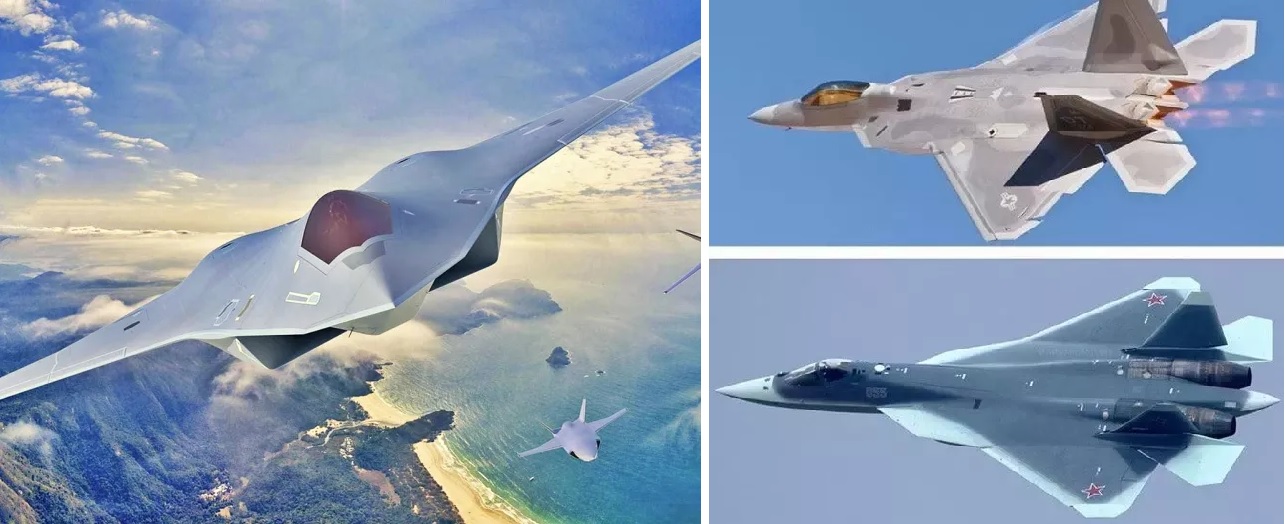 Key Differences Between 5th vs. 6th Generation Fighter Jets
Key Differences Between 5th vs. 6th Generation Fighter Jets
-
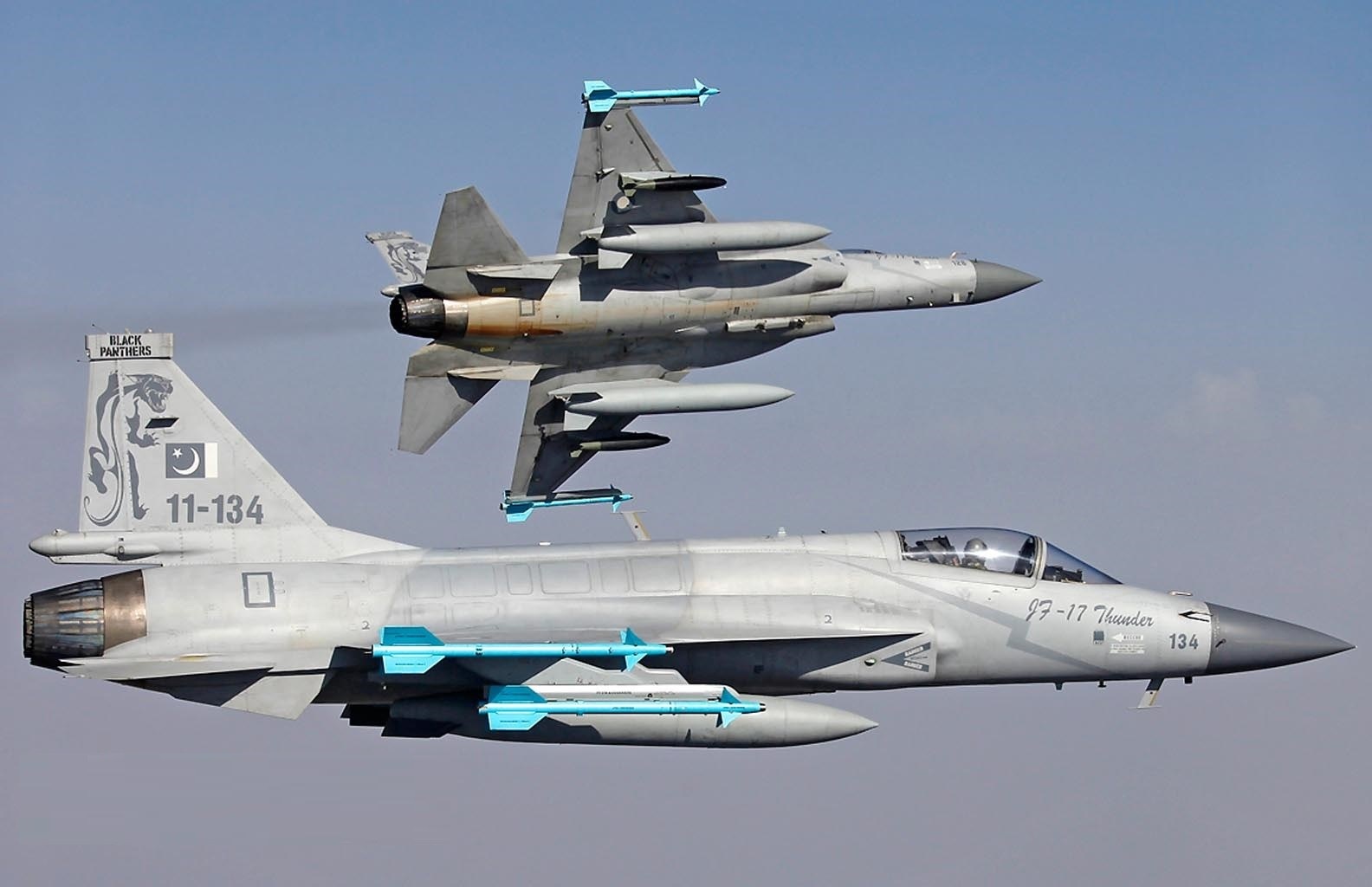 Pakistan Air Force to Unveil Stealth-Enhanced JF-17 Block 4 Fighter Jet by 2028
Pakistan Air Force to Unveil Stealth-Enhanced JF-17 Block 4 Fighter Jet by 2028
-
 India’s AMCA Engine Decision: Safran vs. Rolls-Royce Final Expected by 2025
India’s AMCA Engine Decision: Safran vs. Rolls-Royce Final Expected by 2025
-
 Pakistan Announces 15% Increase in Defence Budget for 2024-25 Amid Economic Crisis
Pakistan Announces 15% Increase in Defence Budget for 2024-25 Amid Economic Crisis
-
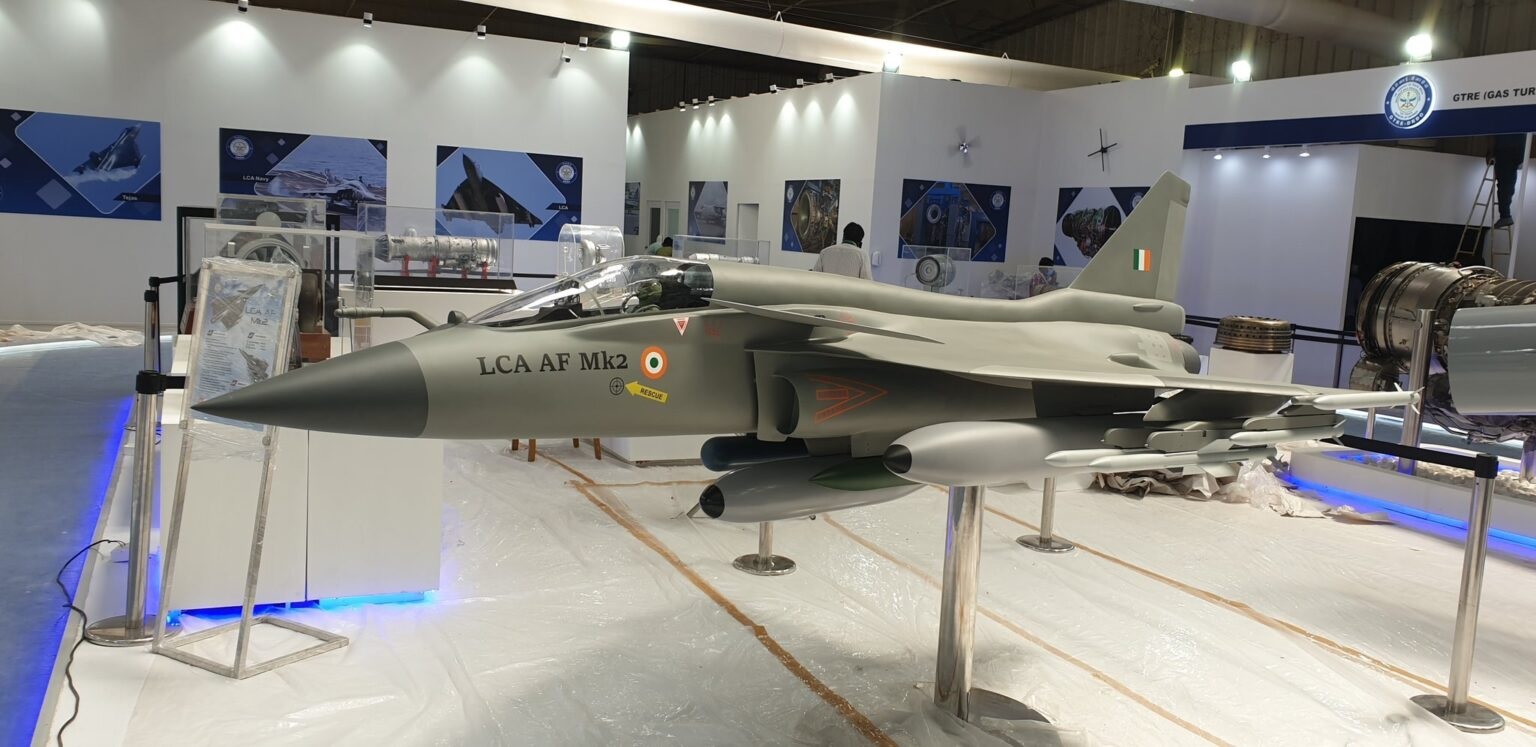 Tejas Mk2 Nears 2025 Rollout as HAL Ramps Up Final Assembly and System Integration
Tejas Mk2 Nears 2025 Rollout as HAL Ramps Up Final Assembly and System Integration
-
 India's TEDBF Program Takes Shape First Flight by 2028: Aiming for Naval Supremacy with Advanced Stealth and Technology
India's TEDBF Program Takes Shape First Flight by 2028: Aiming for Naval Supremacy with Advanced Stealth and Technology
Top Trending in 4 Days
-
 Ukrainian An-124 “Ruslan” Makes Secretive Landing in Israel, Fueling Speculation of Covert Military Support to Kyiv
Ukrainian An-124 “Ruslan” Makes Secretive Landing in Israel, Fueling Speculation of Covert Military Support to Kyiv
-
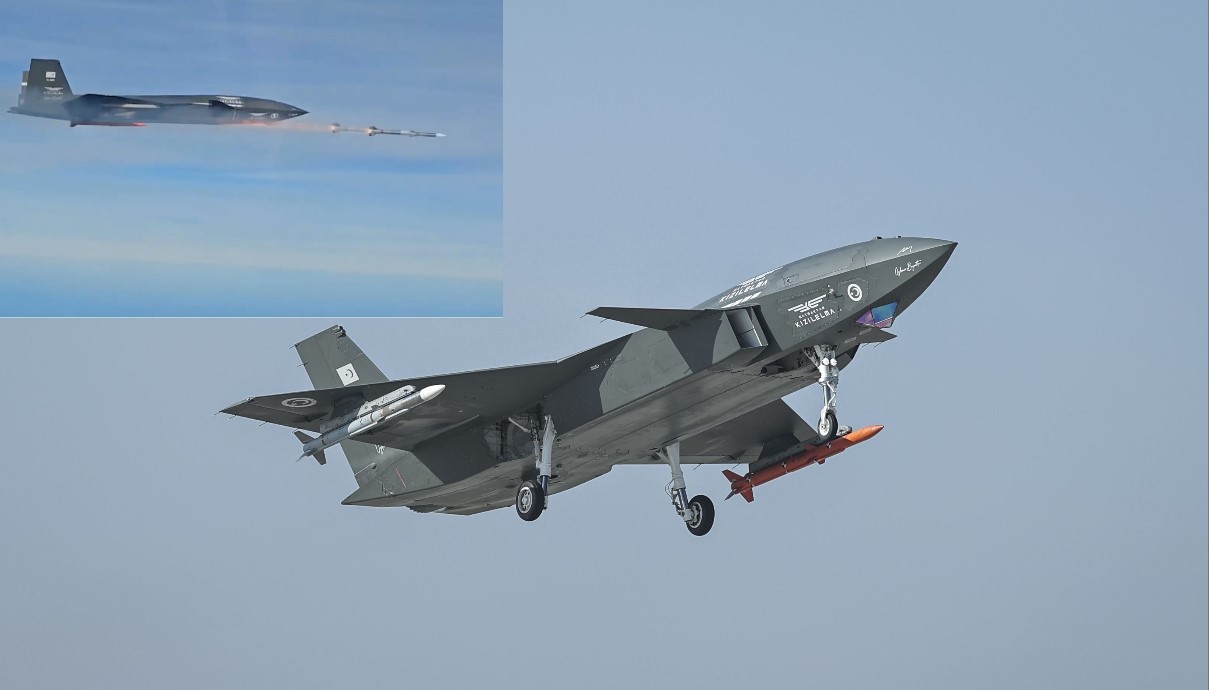 Türkiye’s Bayraktar Kizilelma Becomes First Unmanned Fighter to Shoot Down an Aerial Target with Air-to-Air Missile
Türkiye’s Bayraktar Kizilelma Becomes First Unmanned Fighter to Shoot Down an Aerial Target with Air-to-Air Missile
-
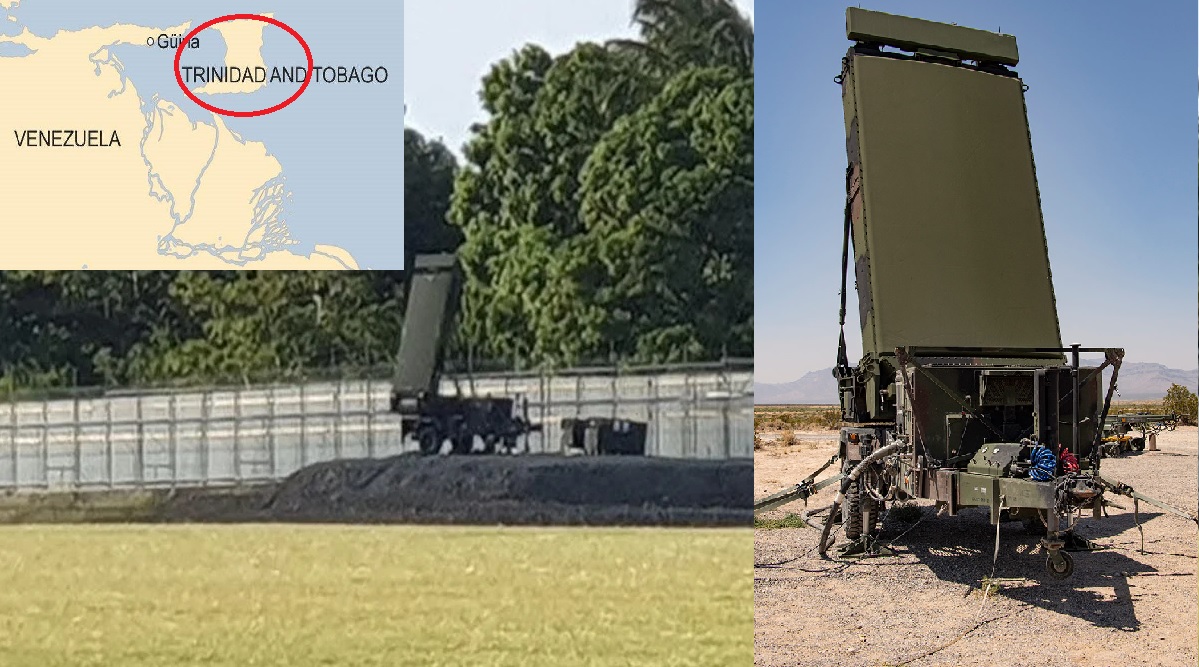 US Marines Install G/ATOR Radar in Tobago For Surveillance Over Southern Caribbean and Venezuela
US Marines Install G/ATOR Radar in Tobago For Surveillance Over Southern Caribbean and Venezuela
-
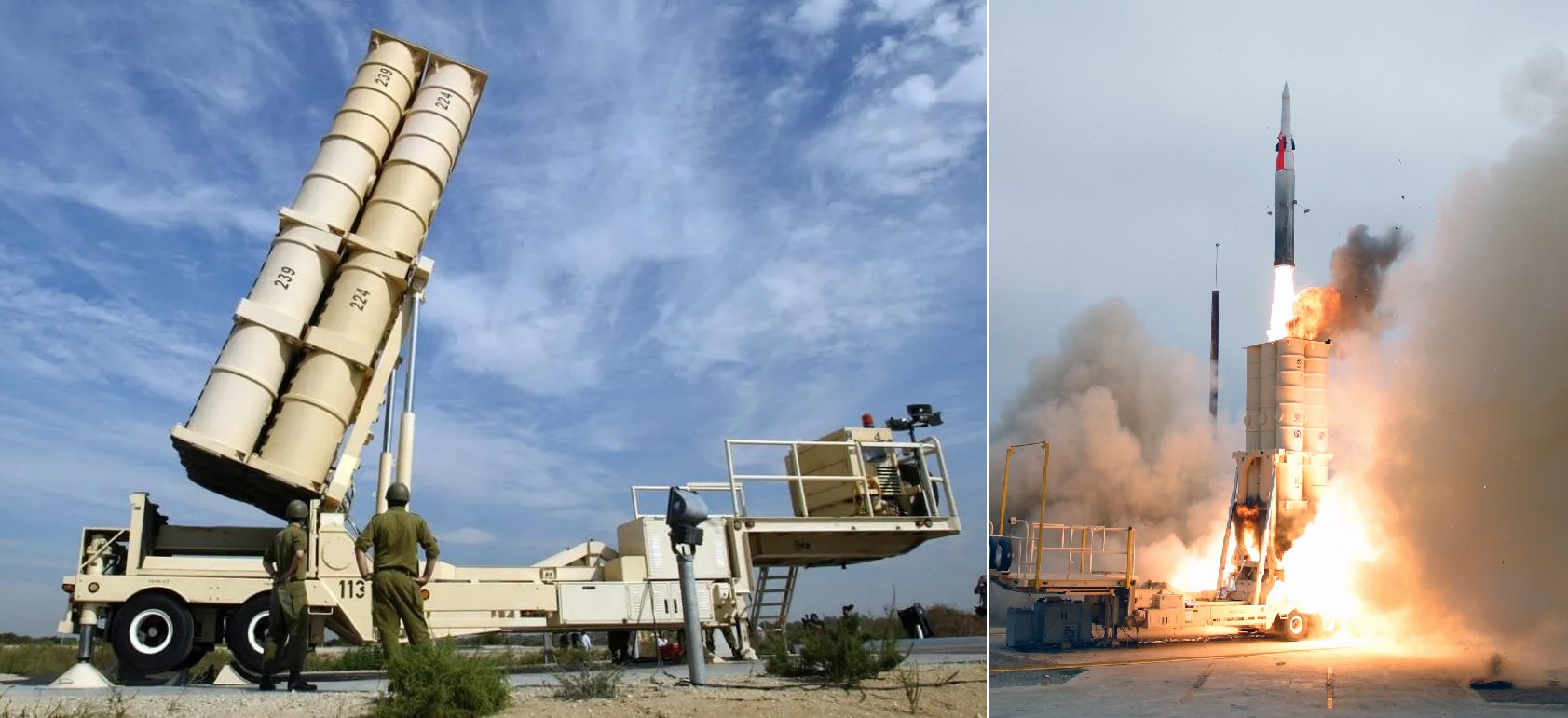 Germany Activates Israel’s Arrow-3, Europe’s First Space-Shield Against Ballistic Missiles
Germany Activates Israel’s Arrow-3, Europe’s First Space-Shield Against Ballistic Missiles
-
 Zelensky Under Pressure as MP Claims He Has Been “Ordered to Resign" Within This Month
Zelensky Under Pressure as MP Claims He Has Been “Ordered to Resign" Within This Month
-
 Venezuela Prepares Asymmetric War Plan: Sabotage, Ambushes, and Guerrilla Attacks Against a Possible US Strike
Venezuela Prepares Asymmetric War Plan: Sabotage, Ambushes, and Guerrilla Attacks Against a Possible US Strike
-
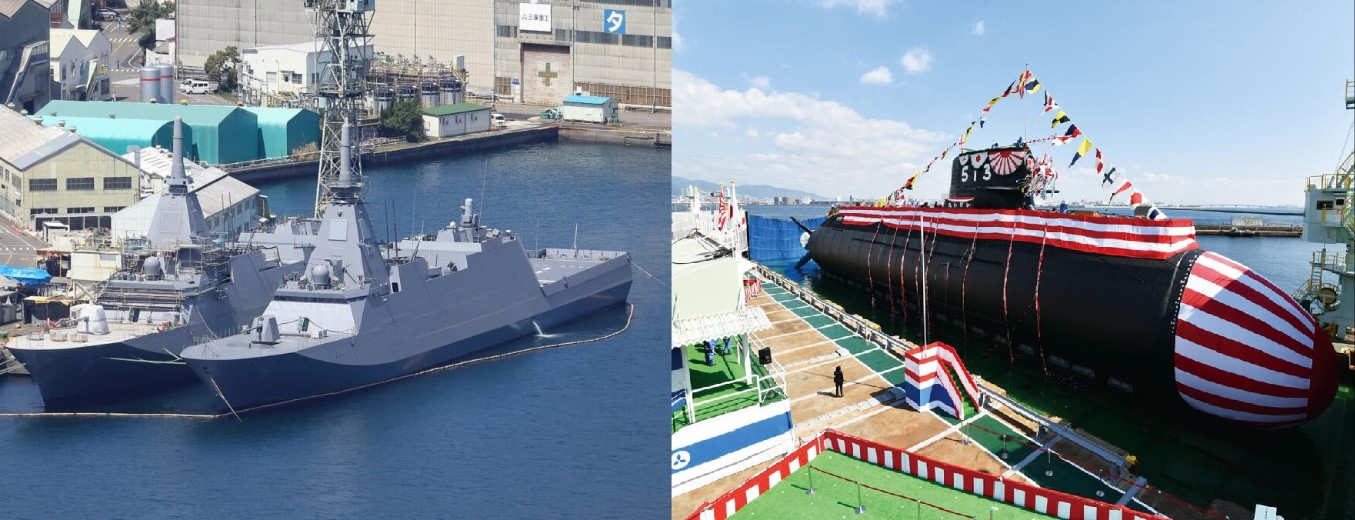 Japan Approves $5.4 billion Supplementary Defense Budget For Accelerate Frigate and Submarine Construction
Japan Approves $5.4 billion Supplementary Defense Budget For Accelerate Frigate and Submarine Construction
-
 America’s Secret F-47 “Ghost Eagle” Fighter Jet Fly With Five Armed Autonomous Drones
America’s Secret F-47 “Ghost Eagle” Fighter Jet Fly With Five Armed Autonomous Drones
